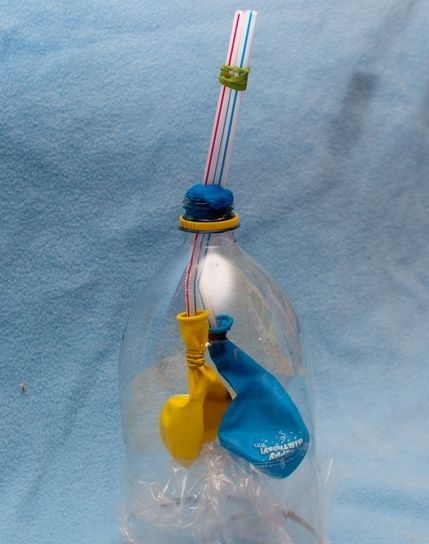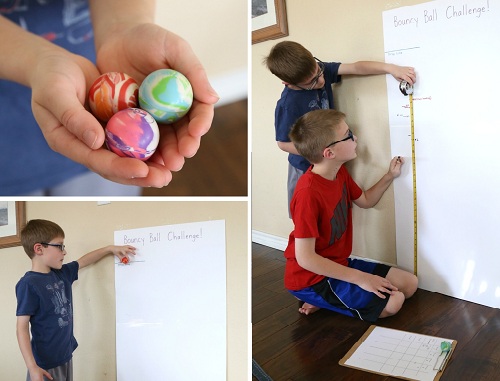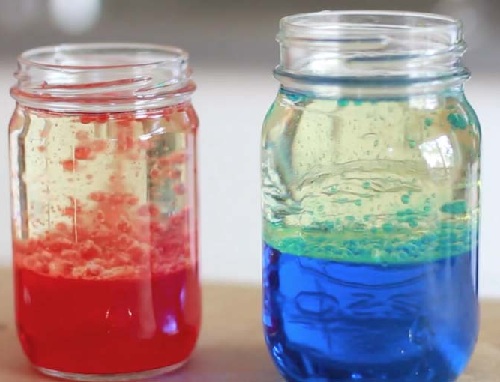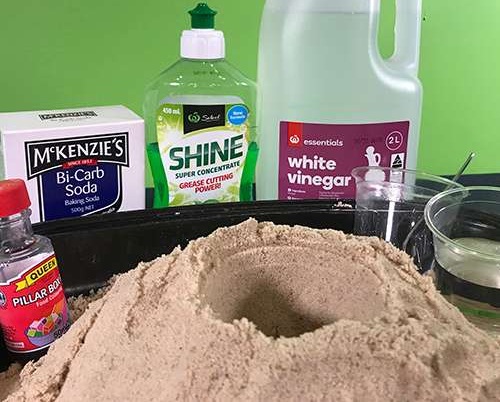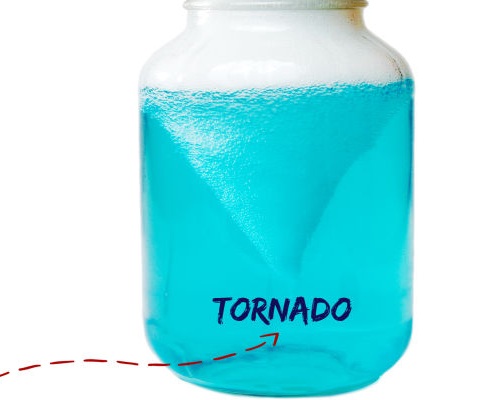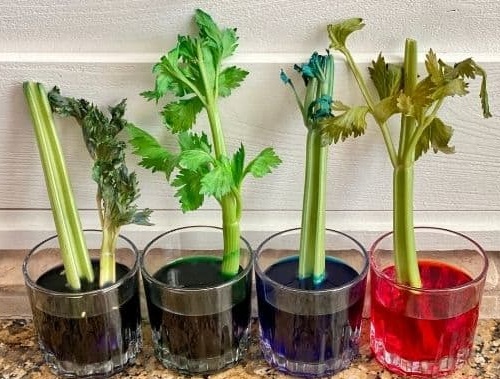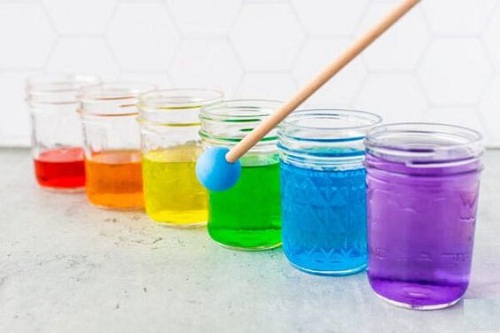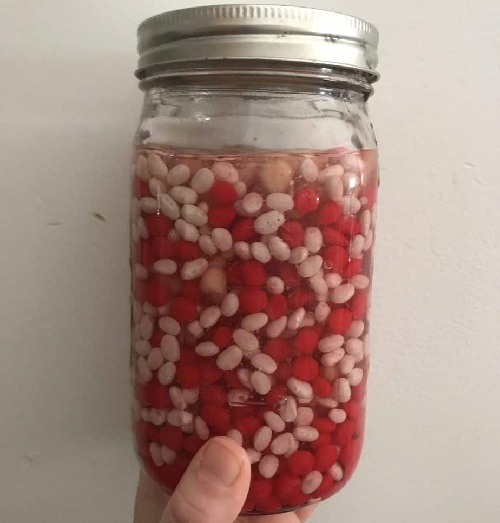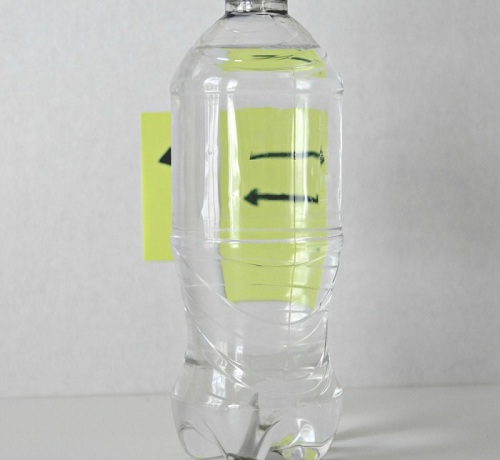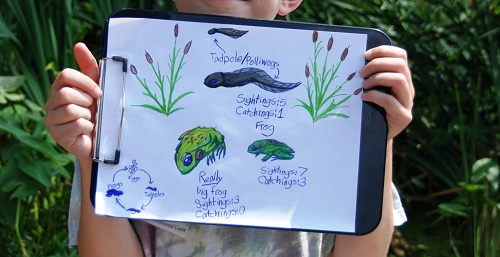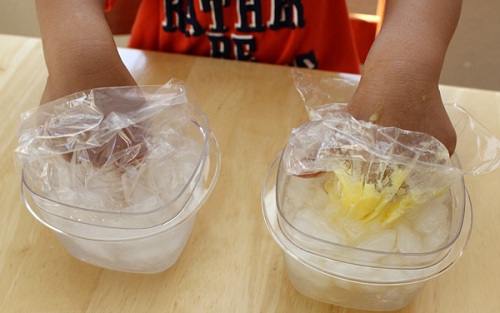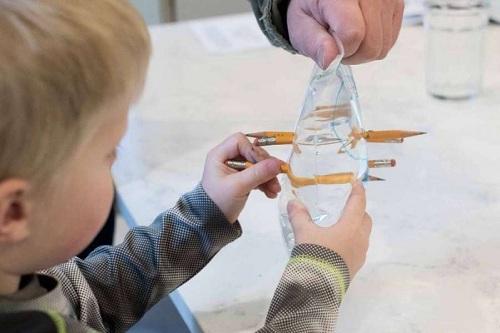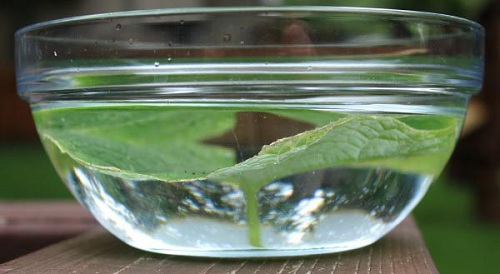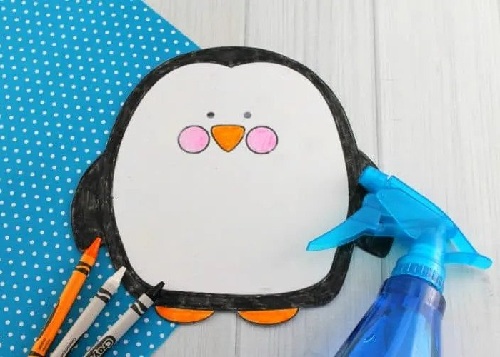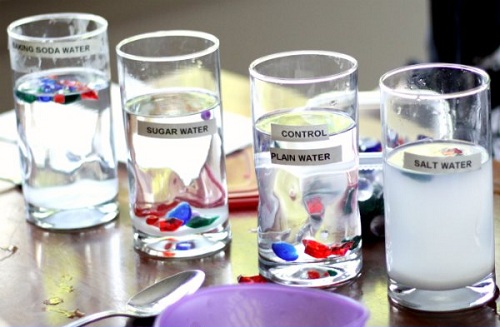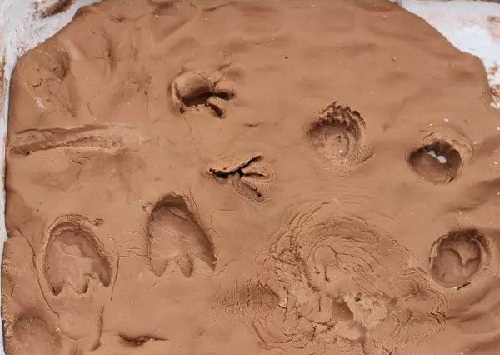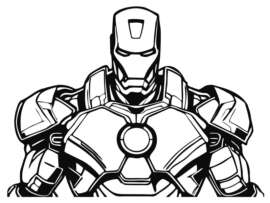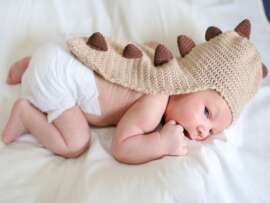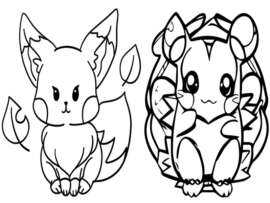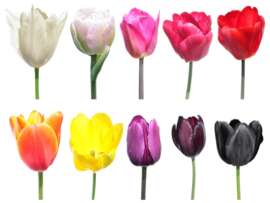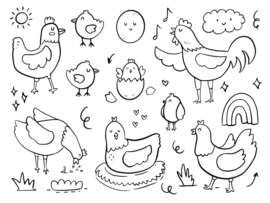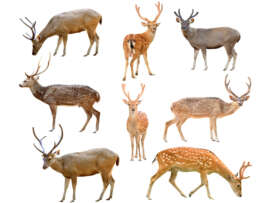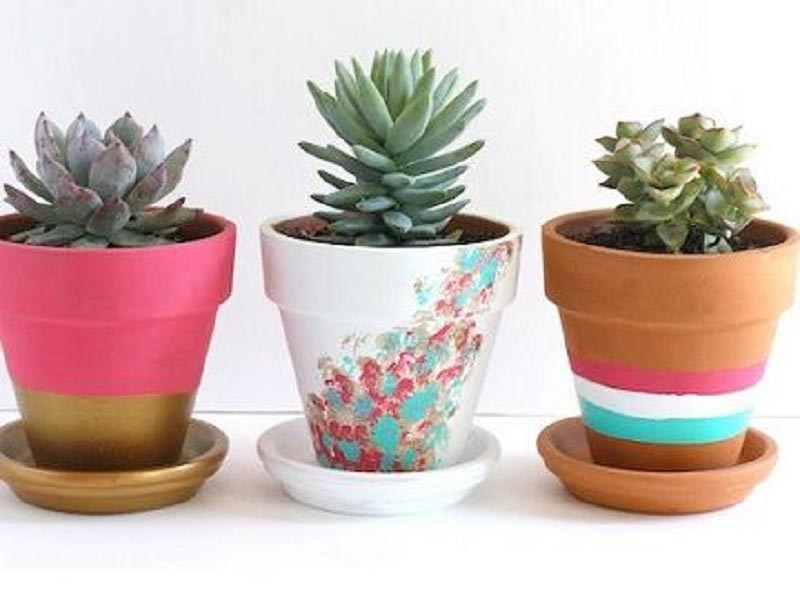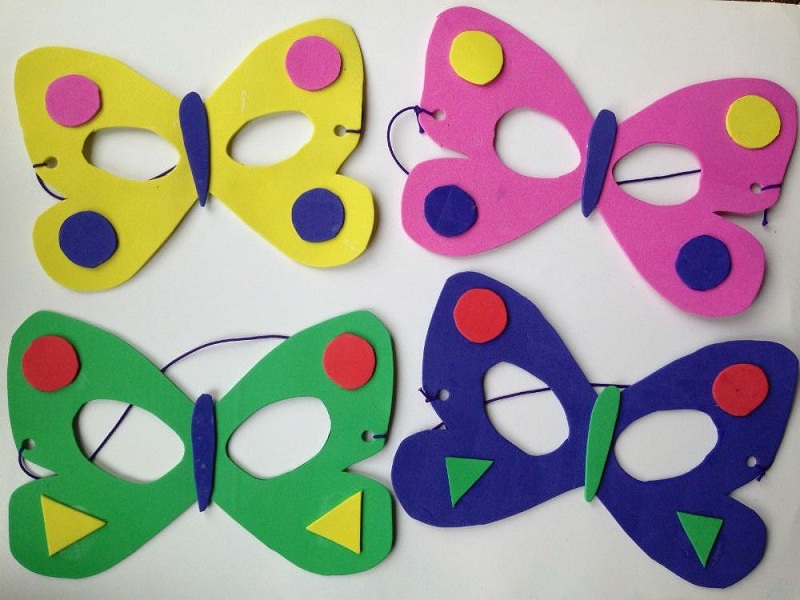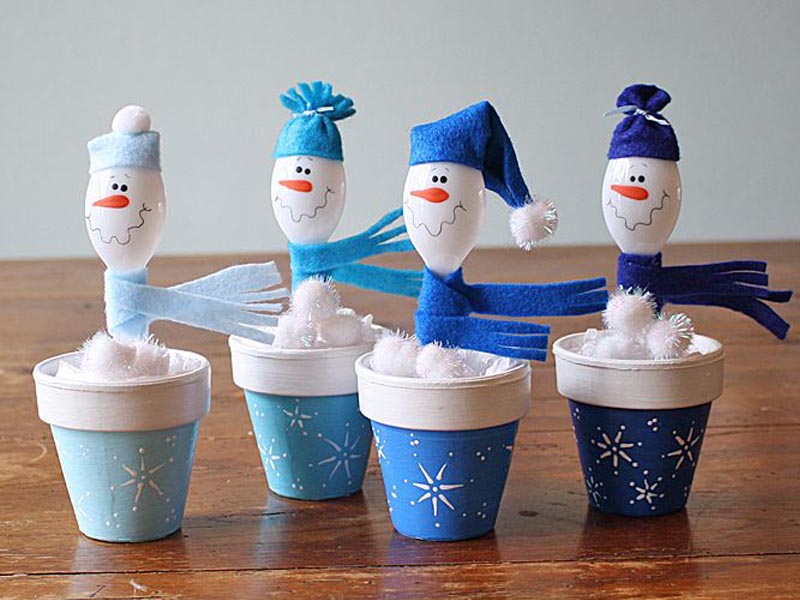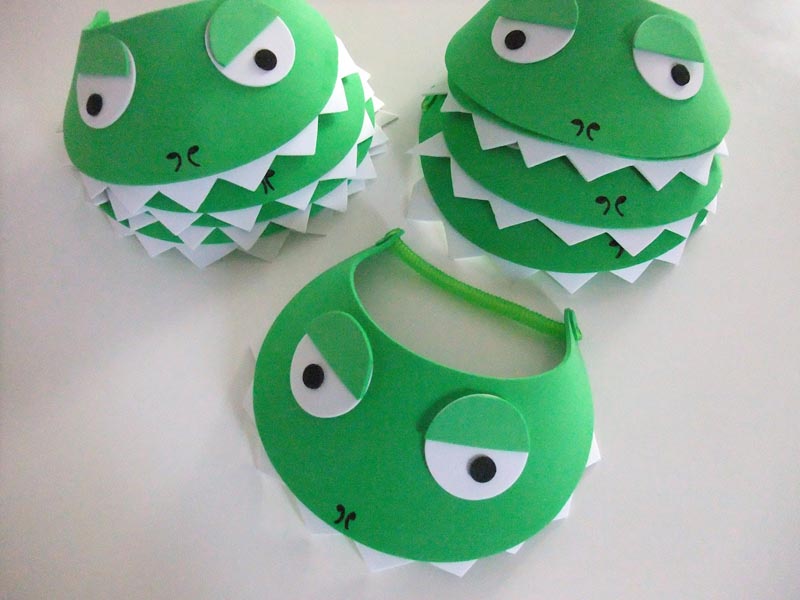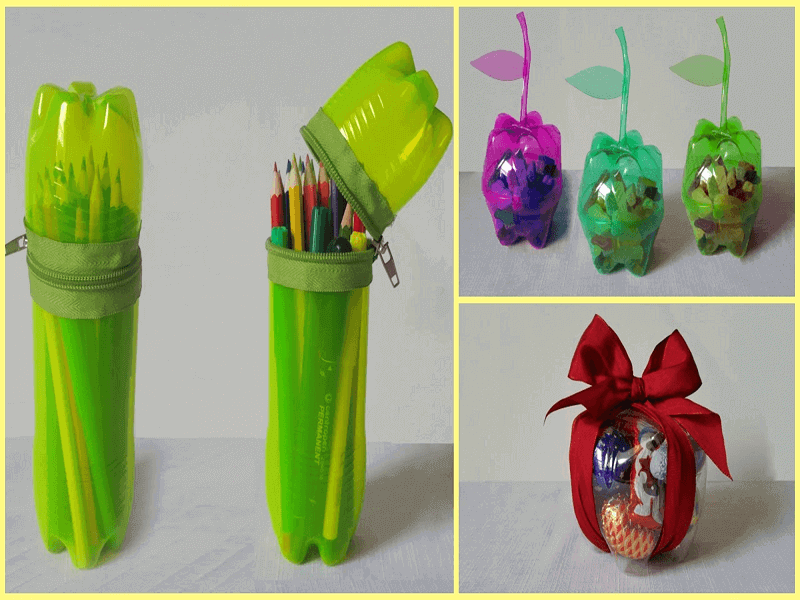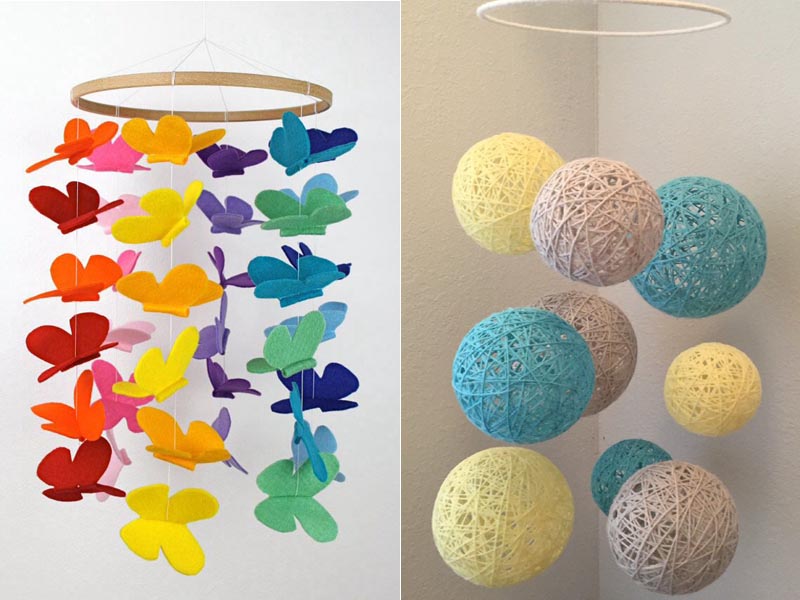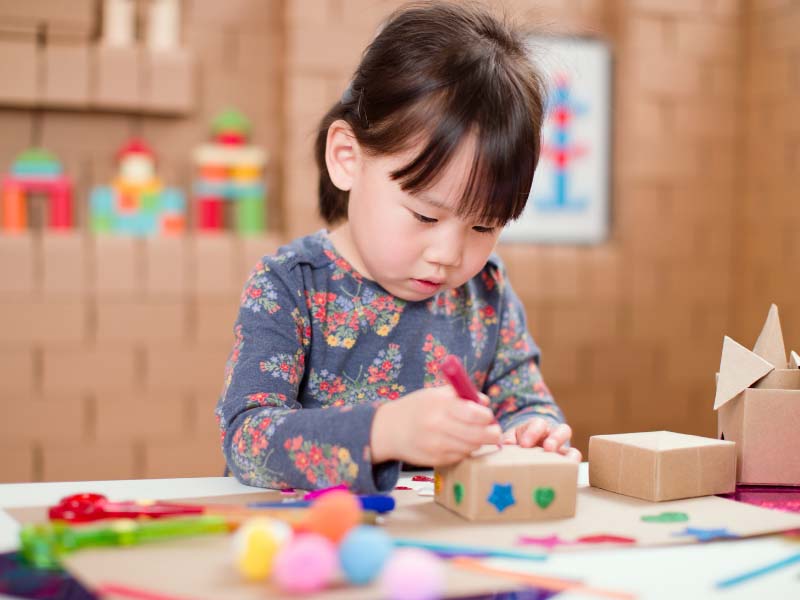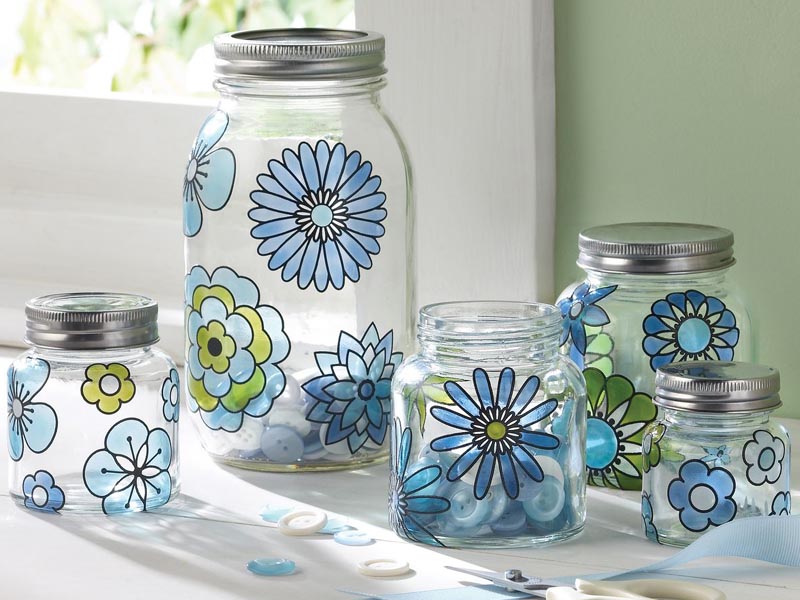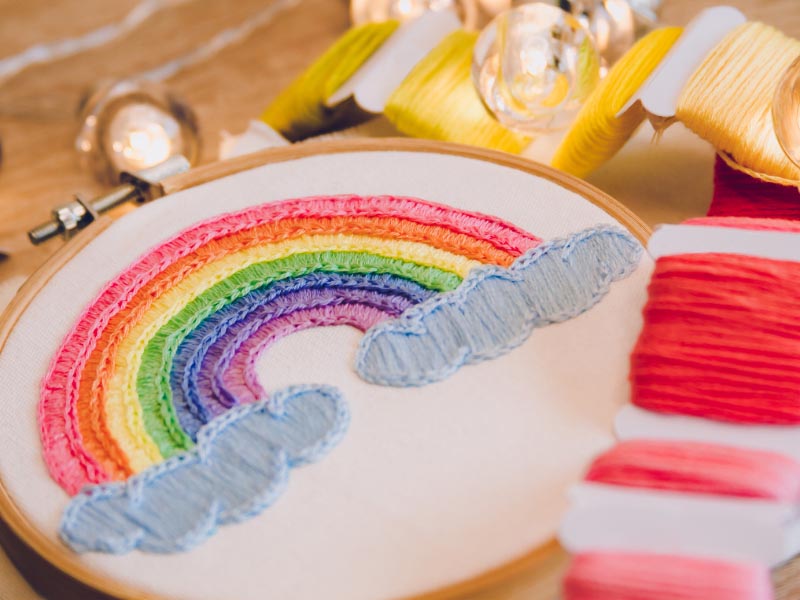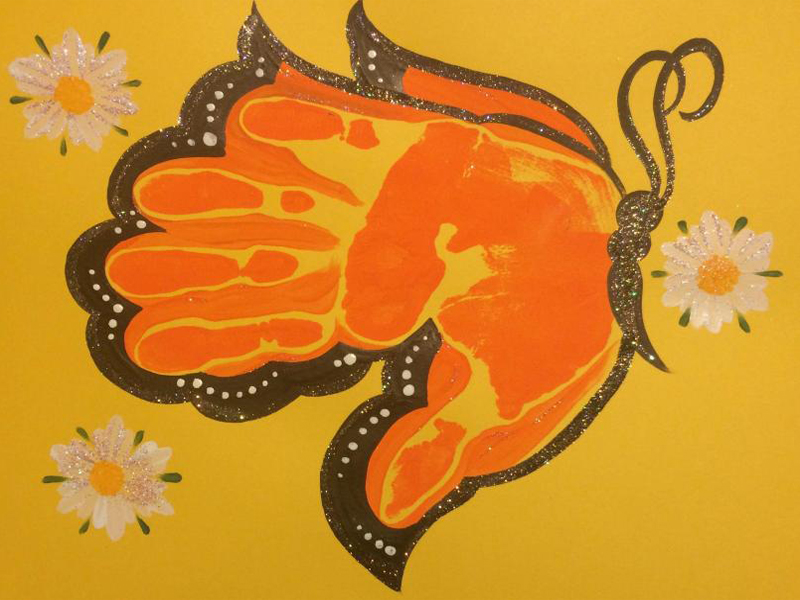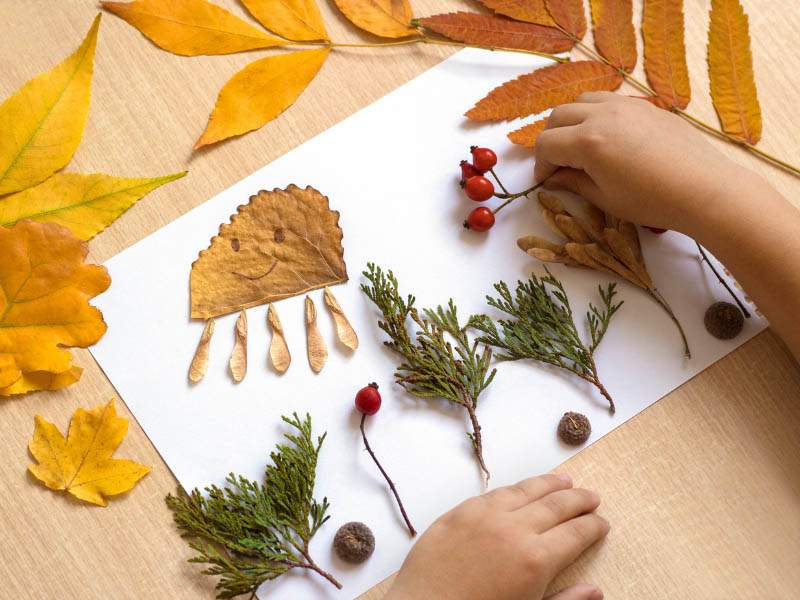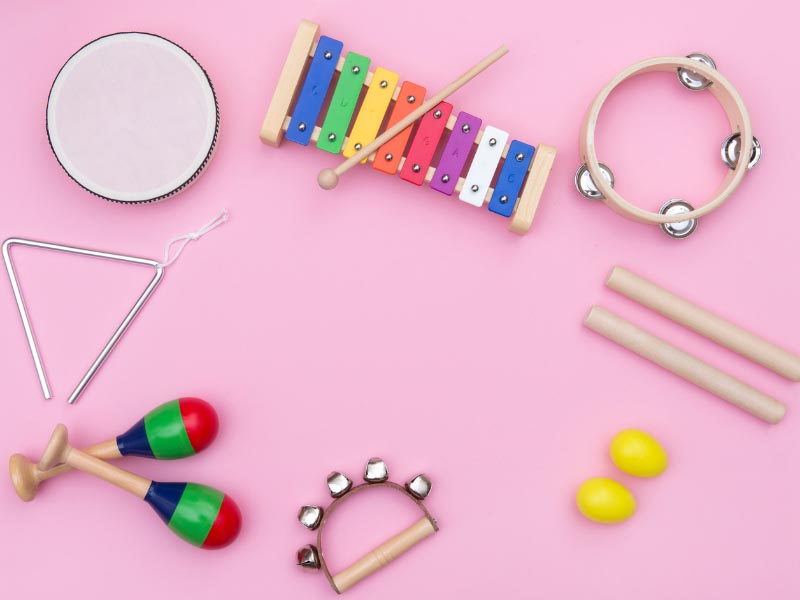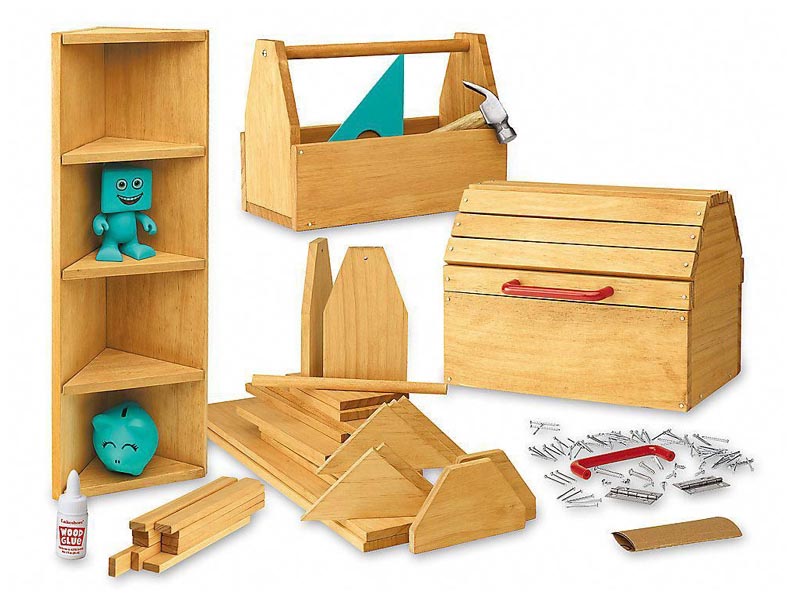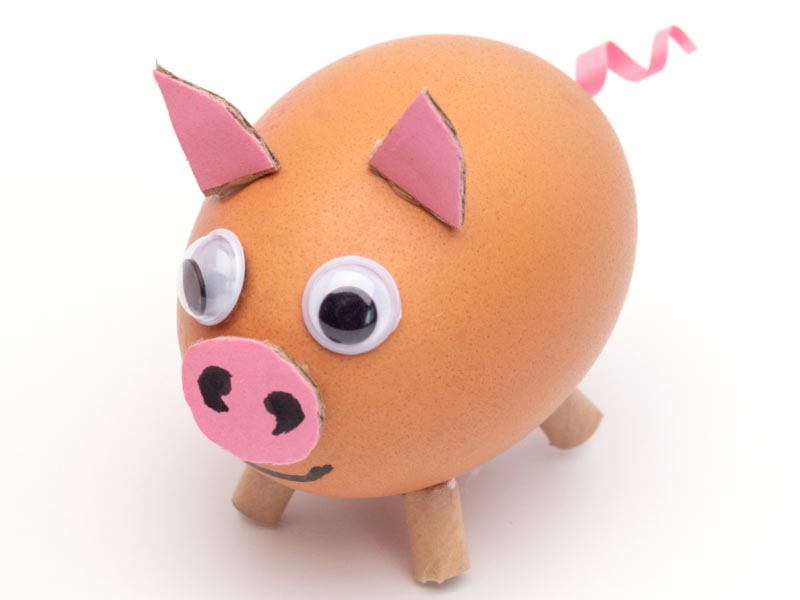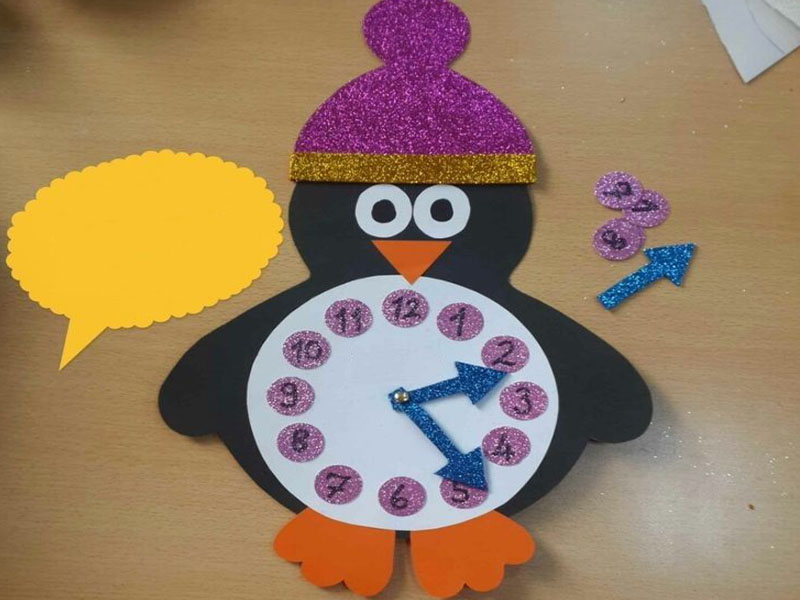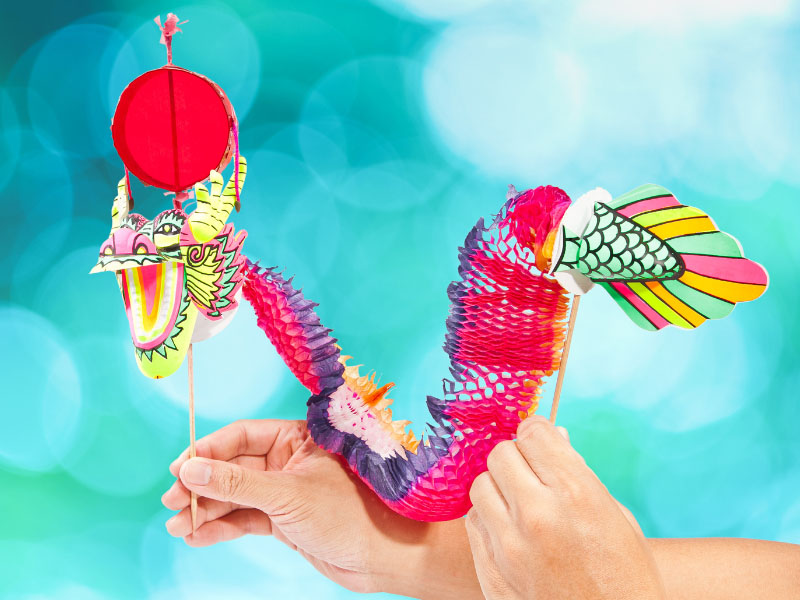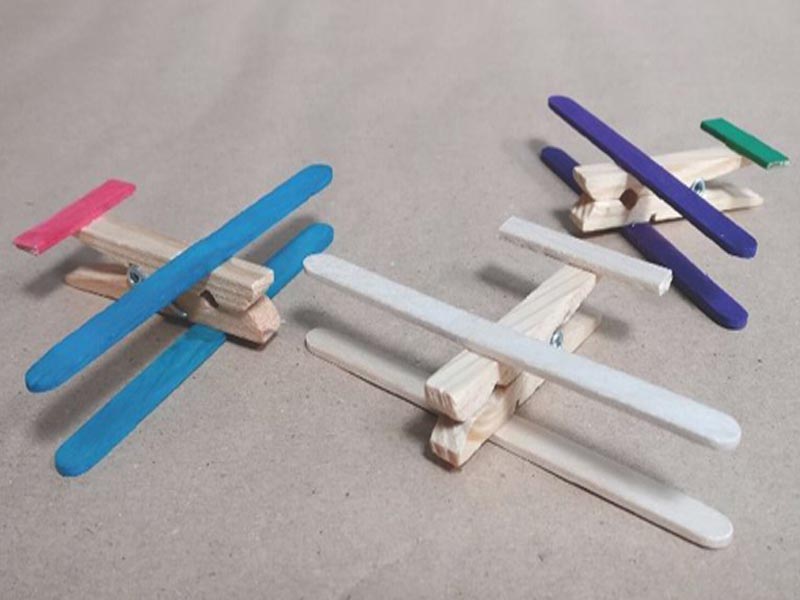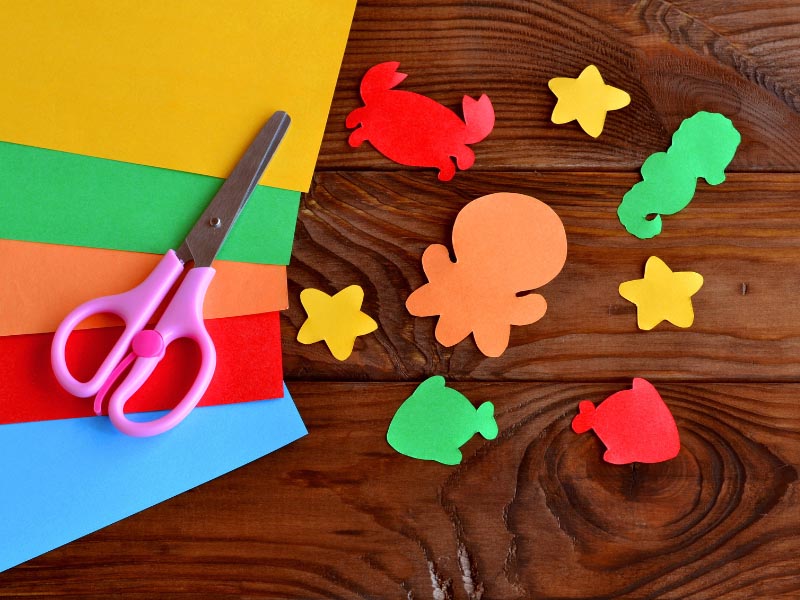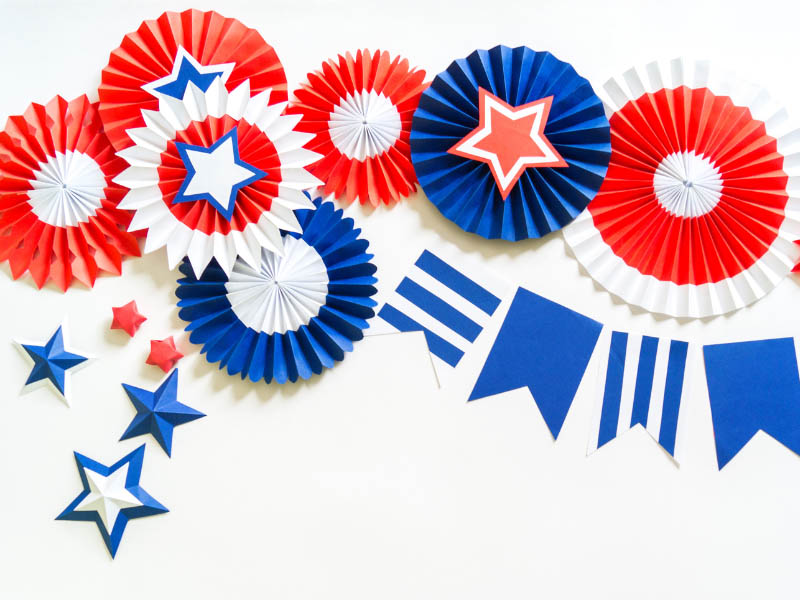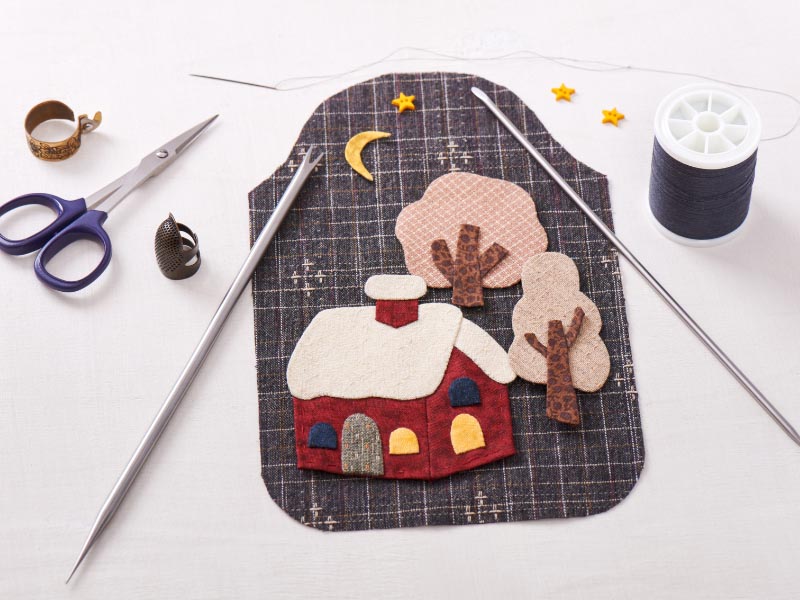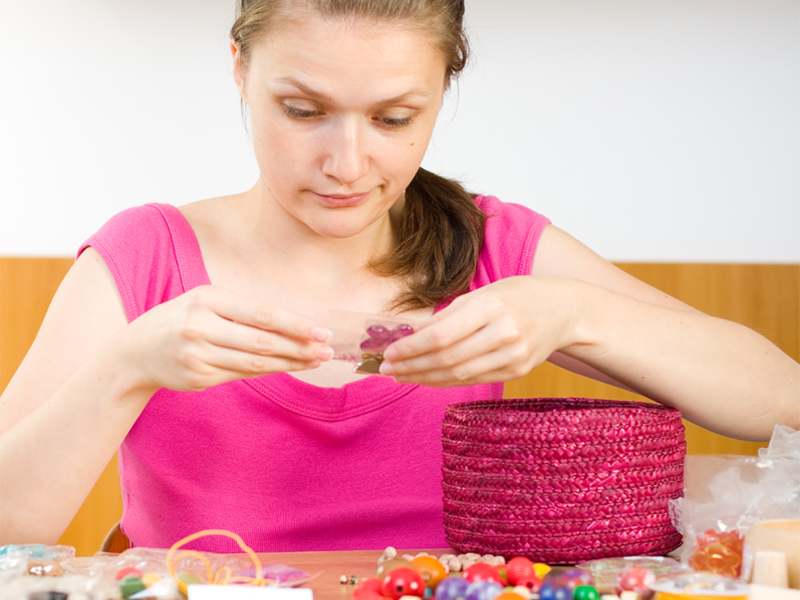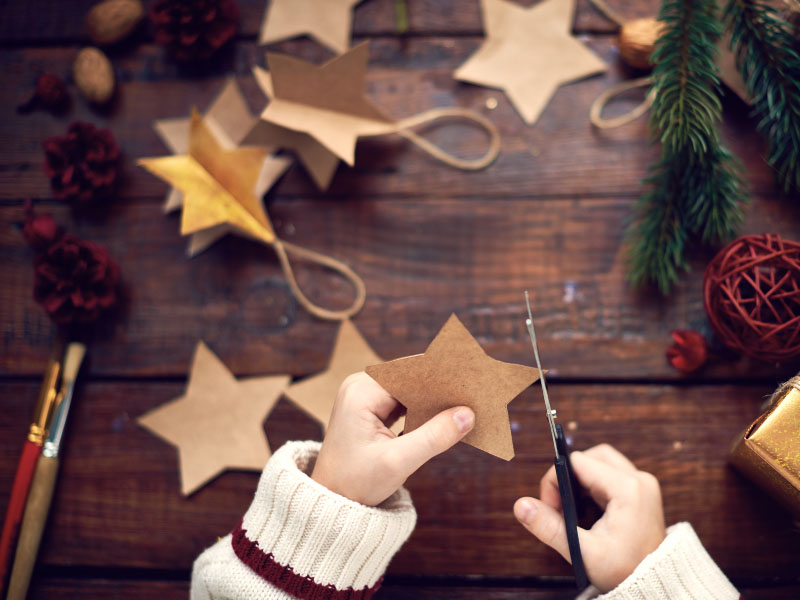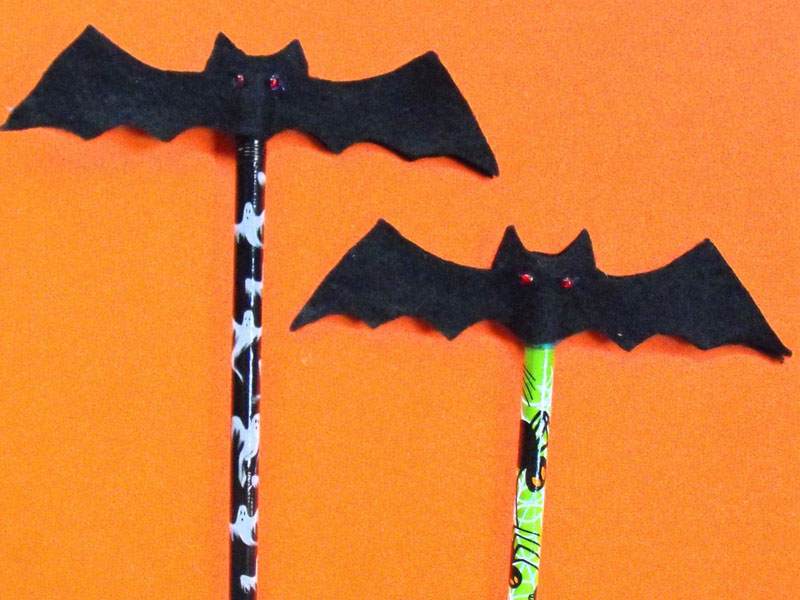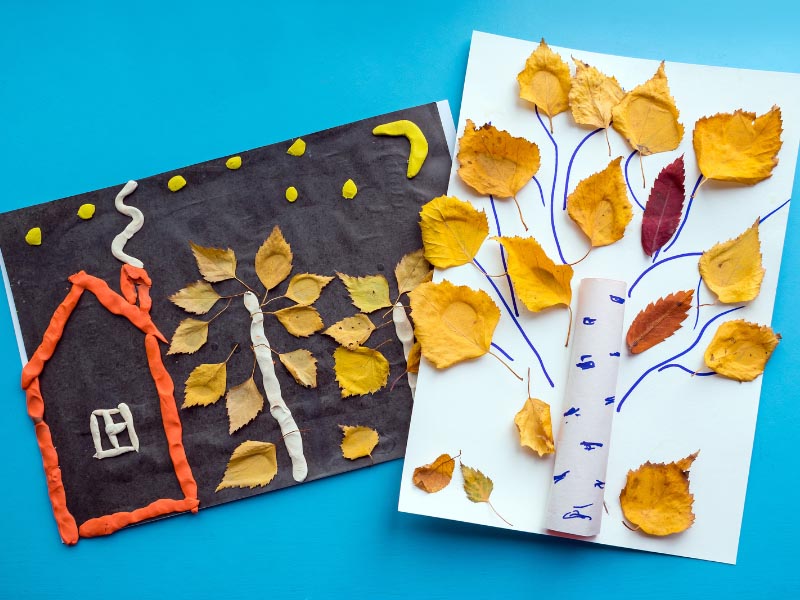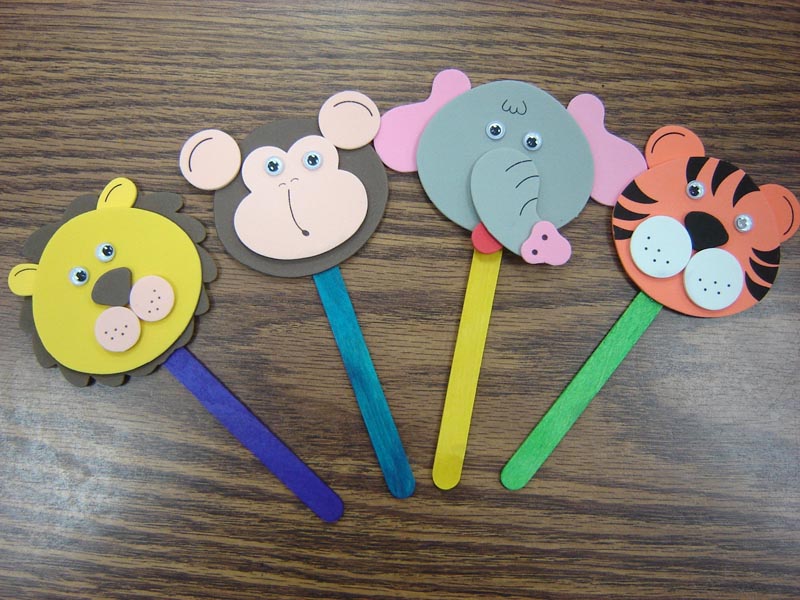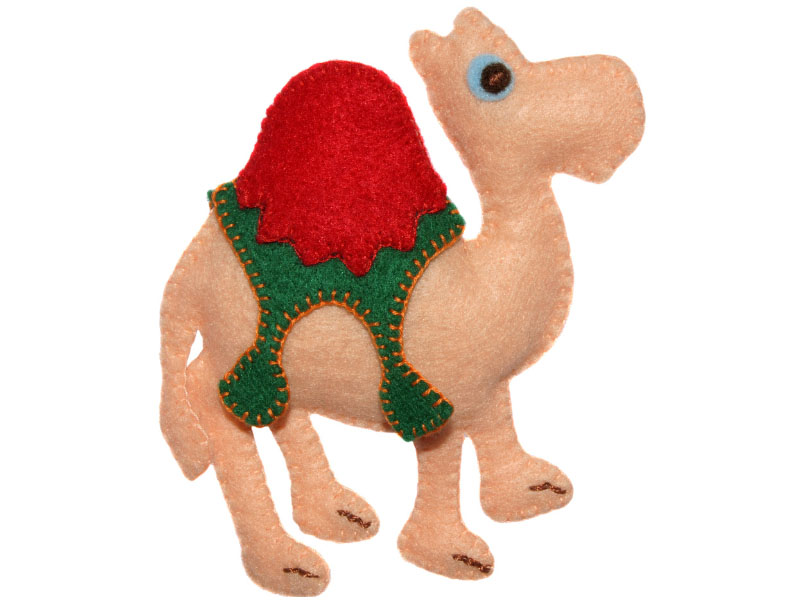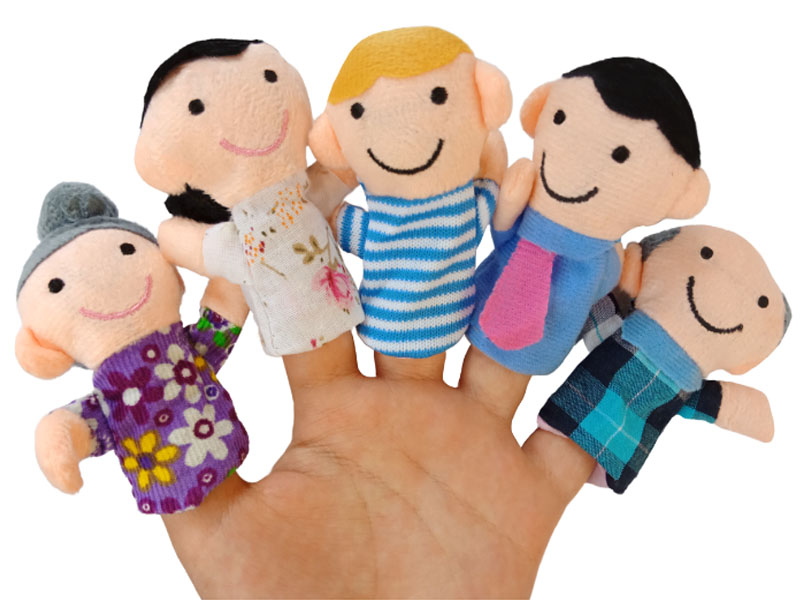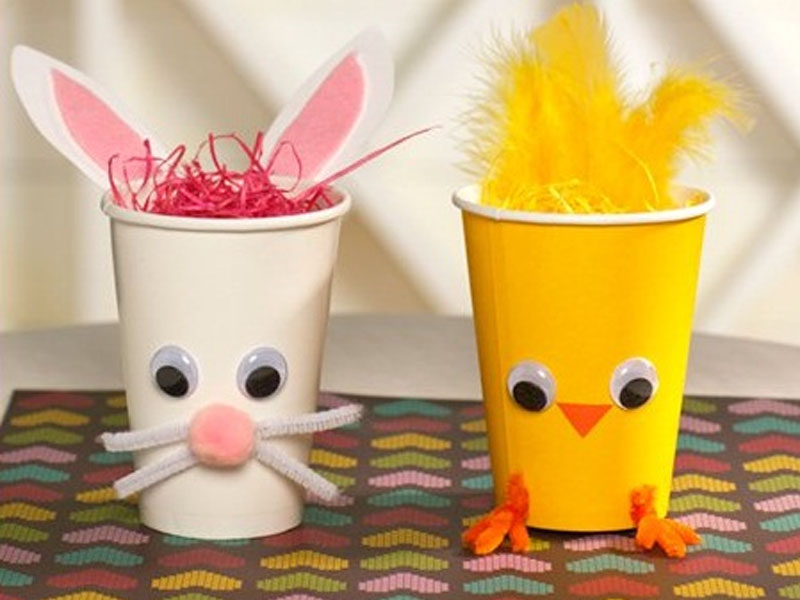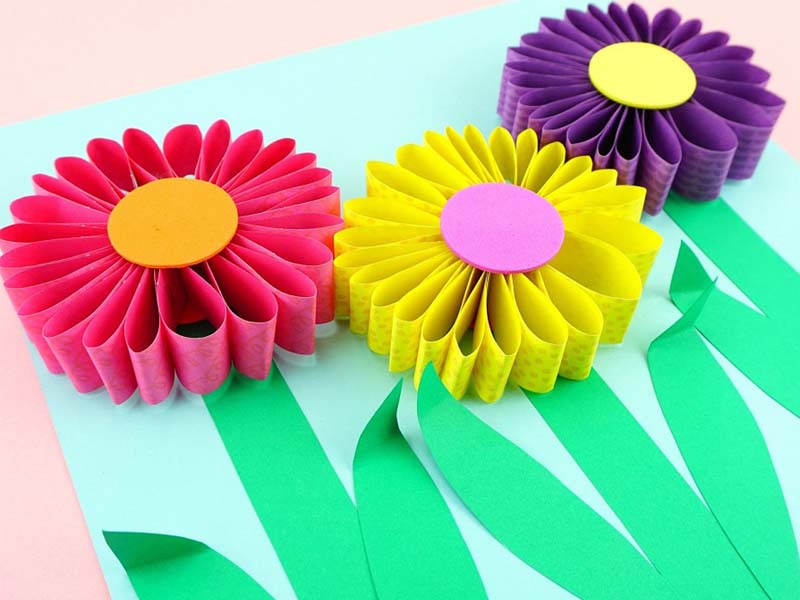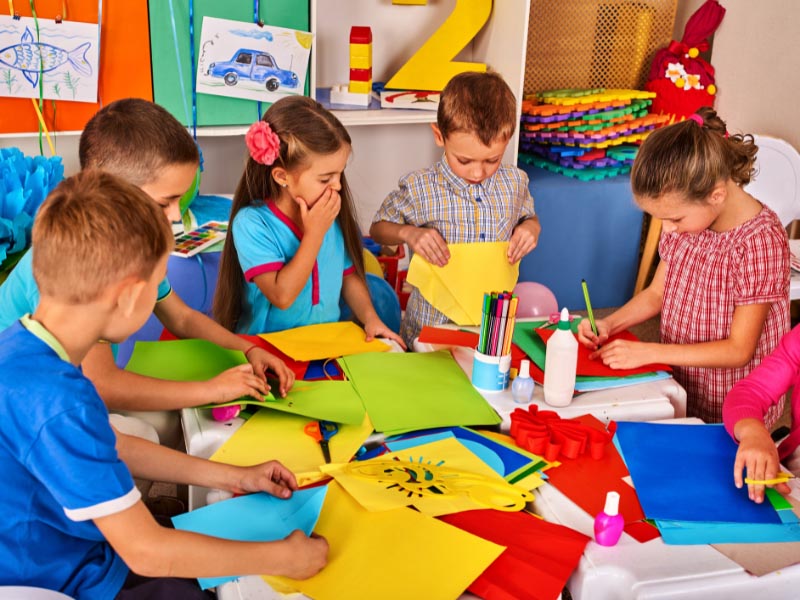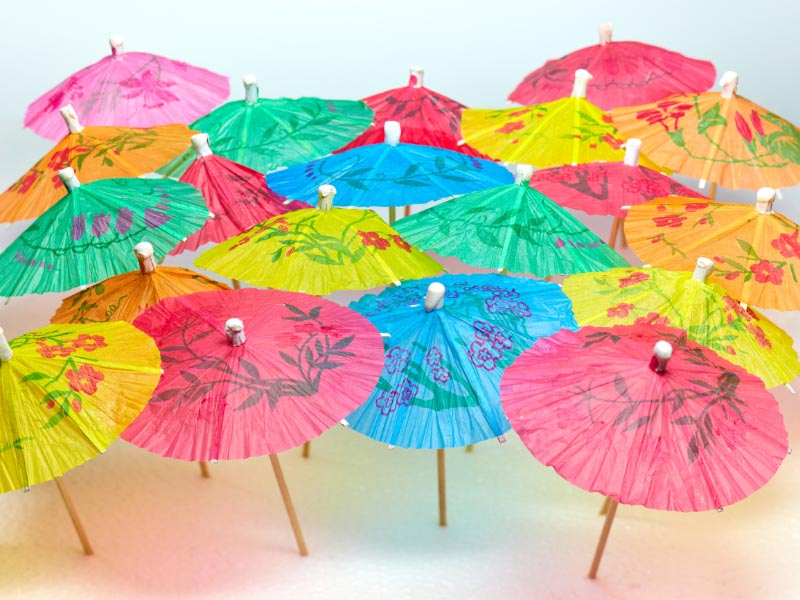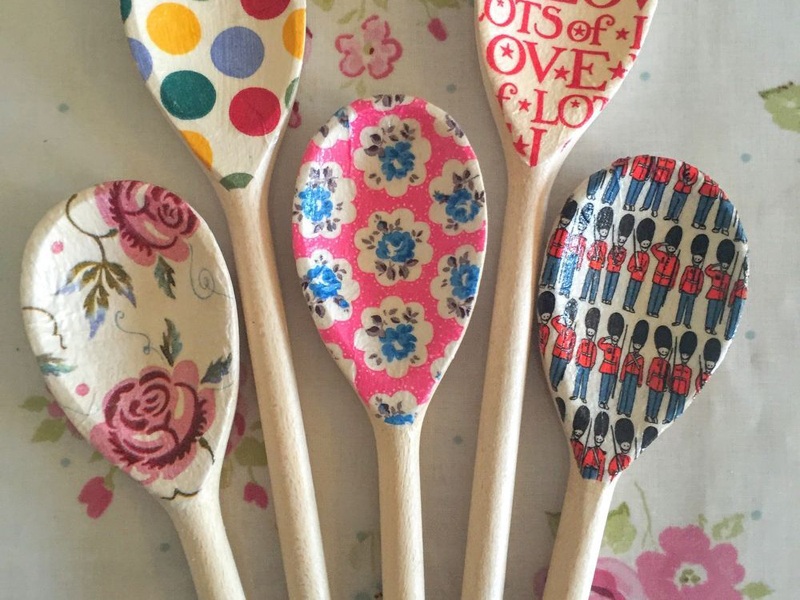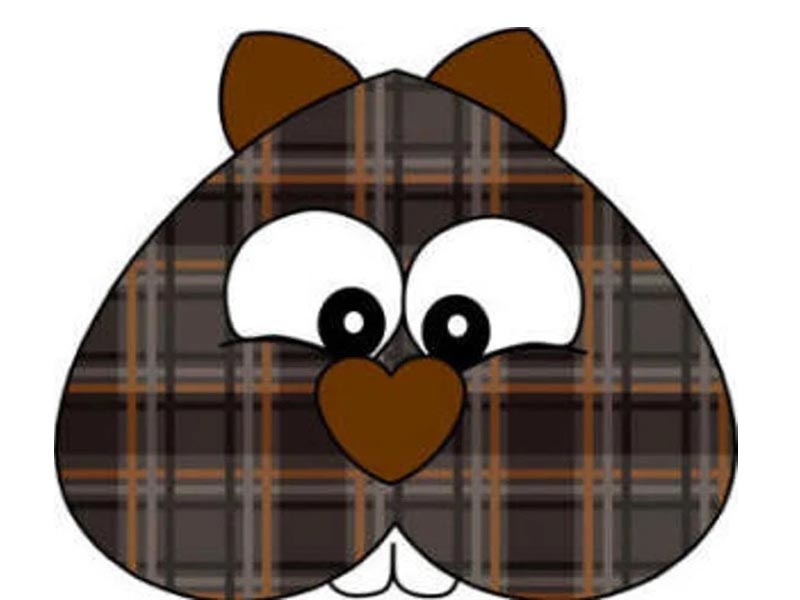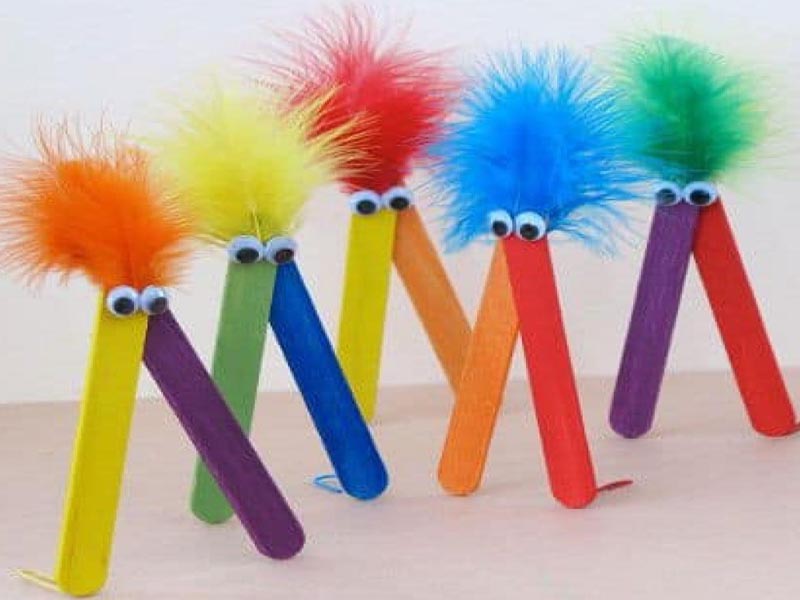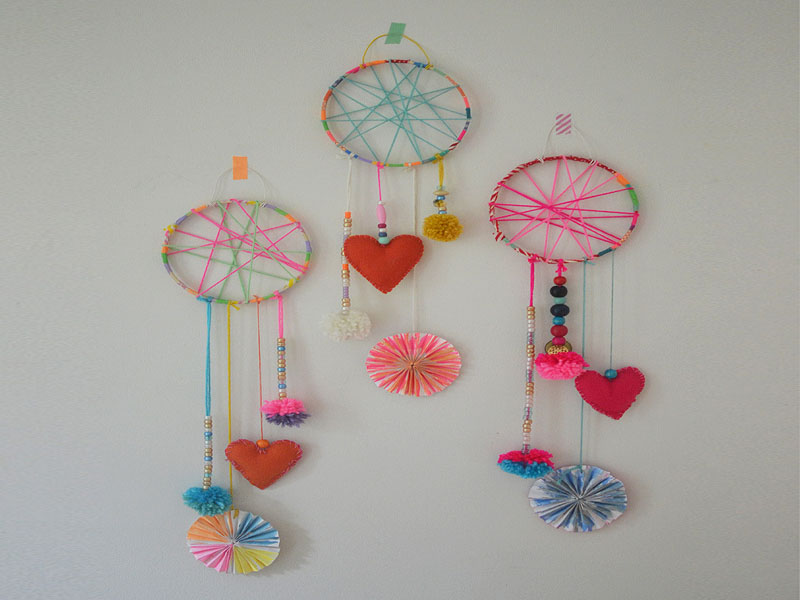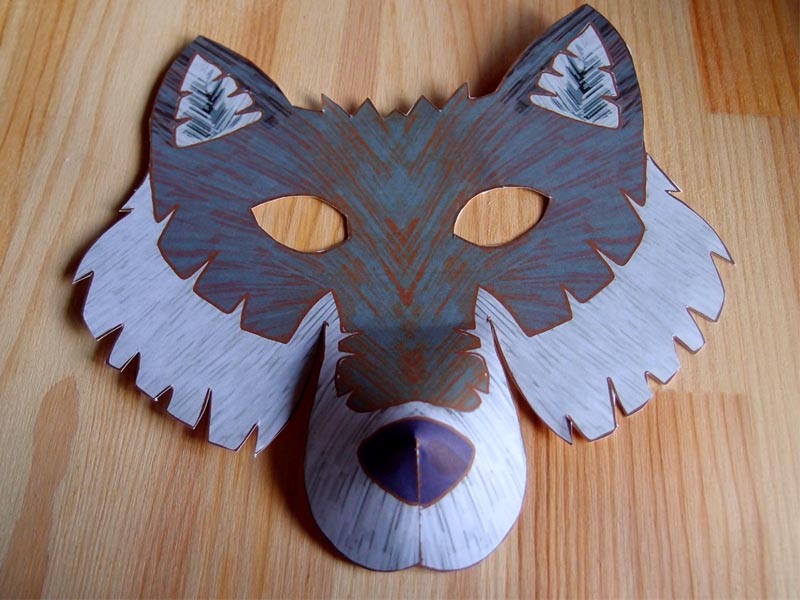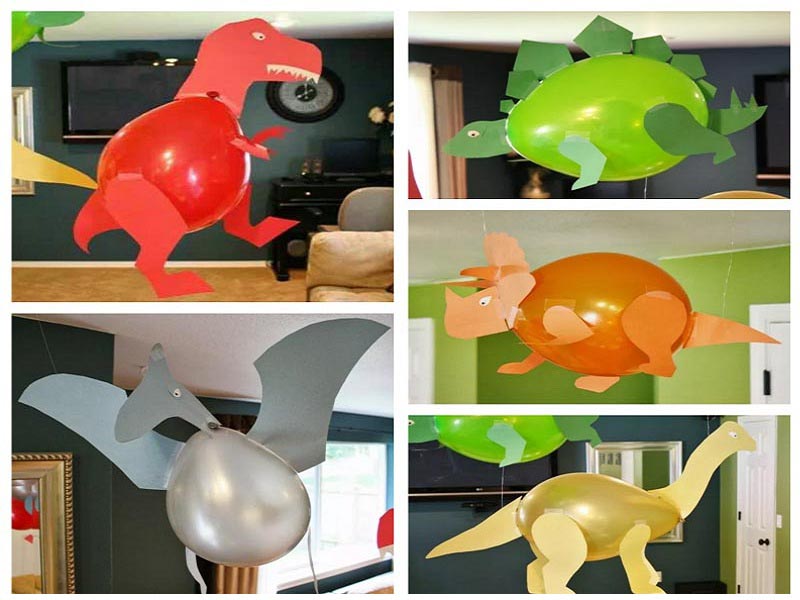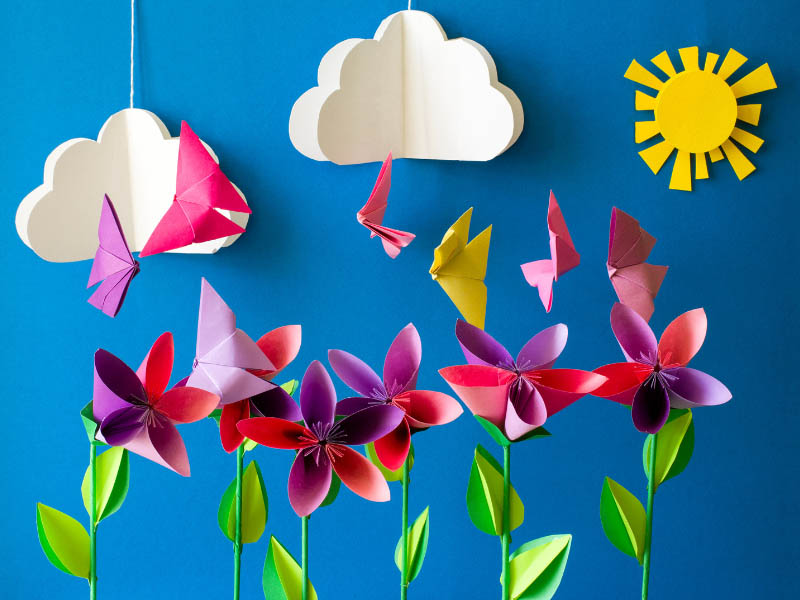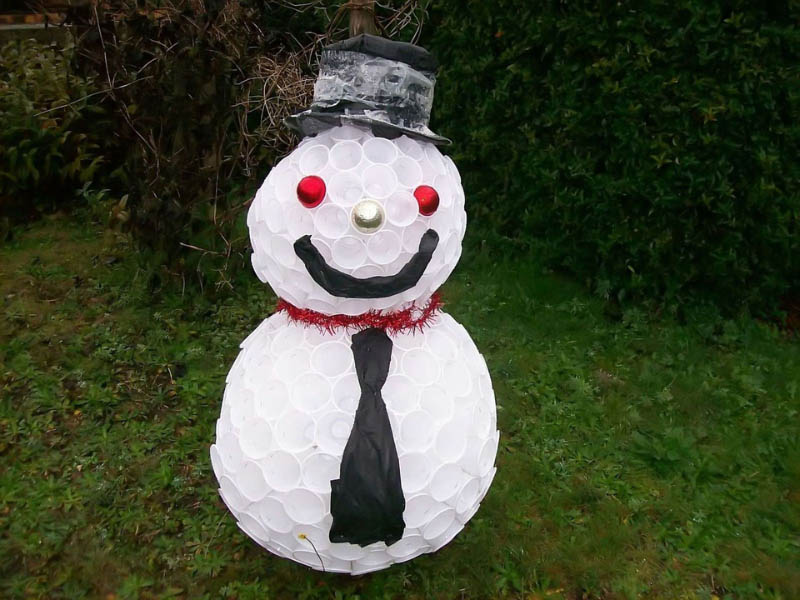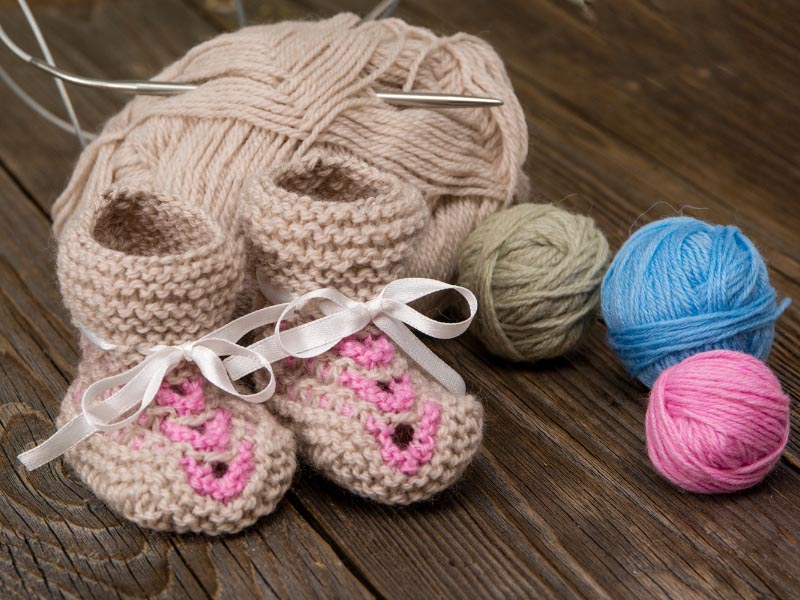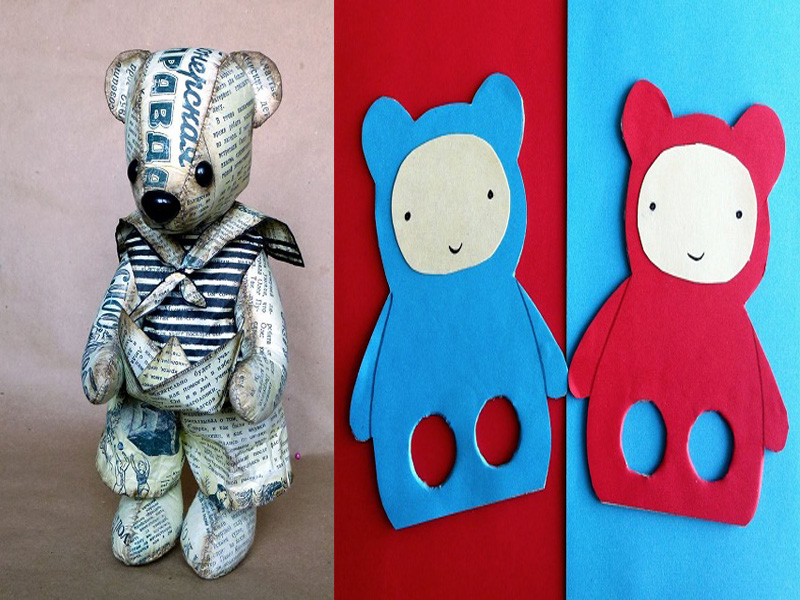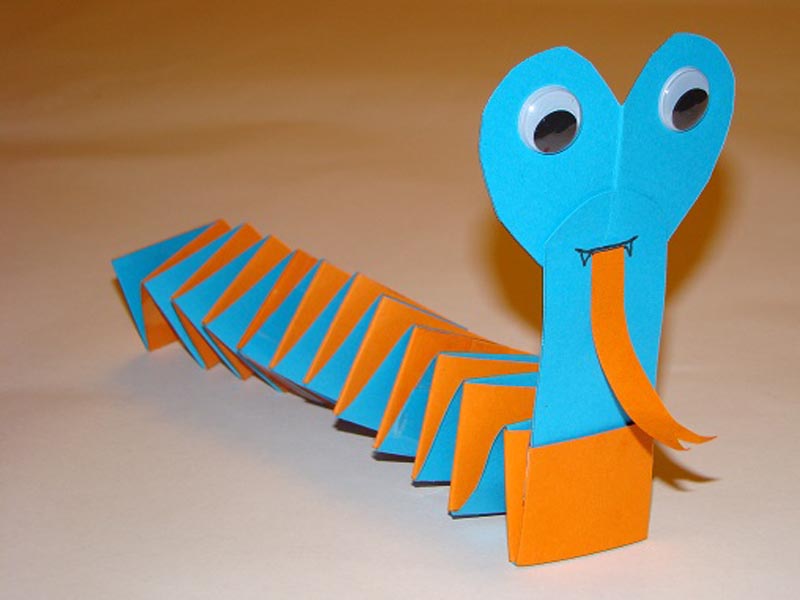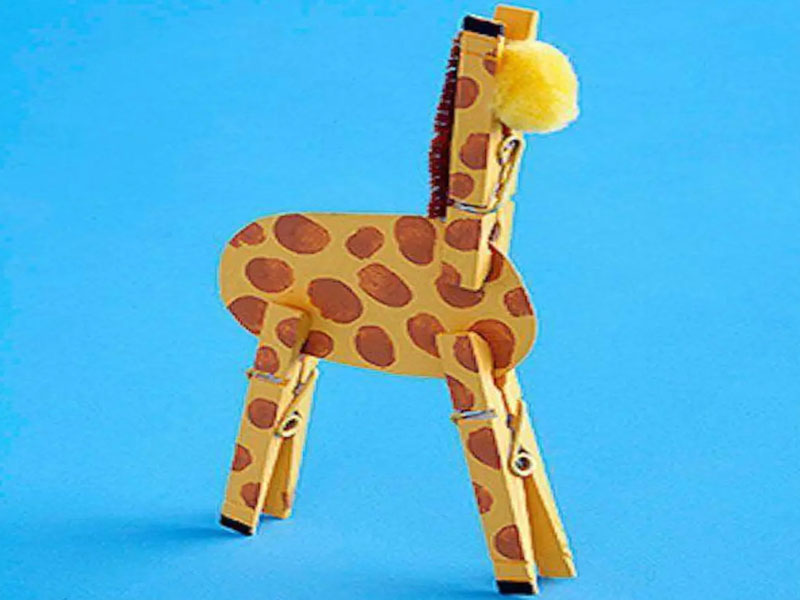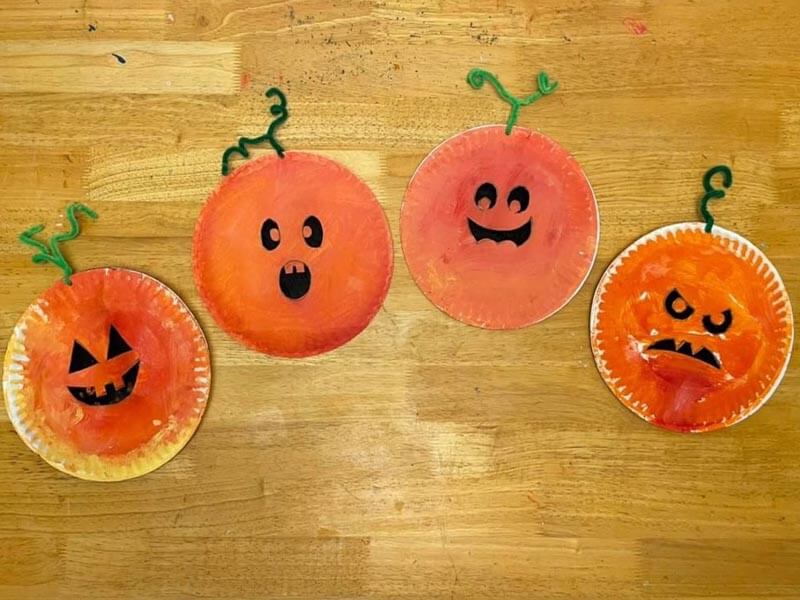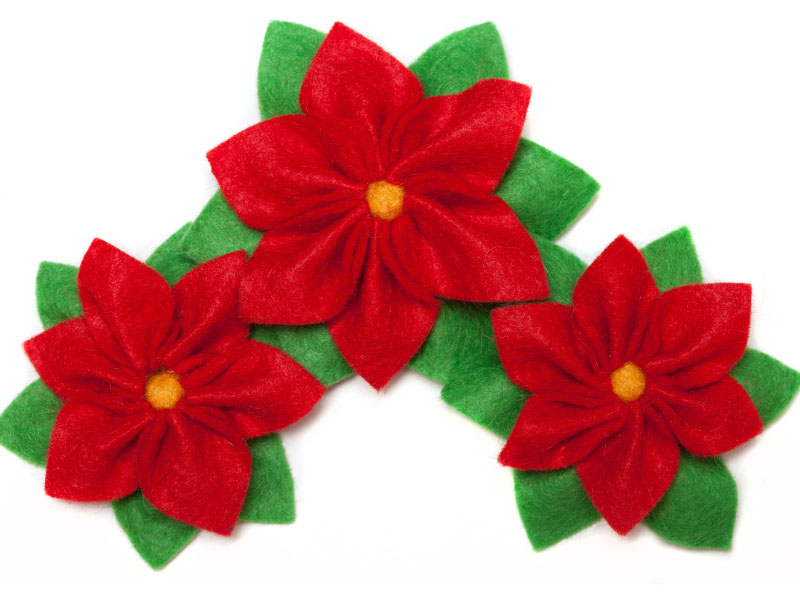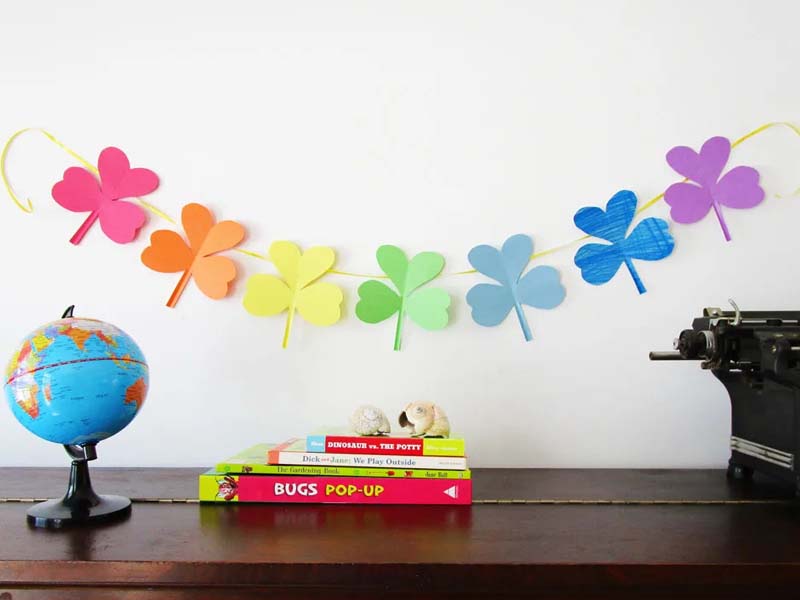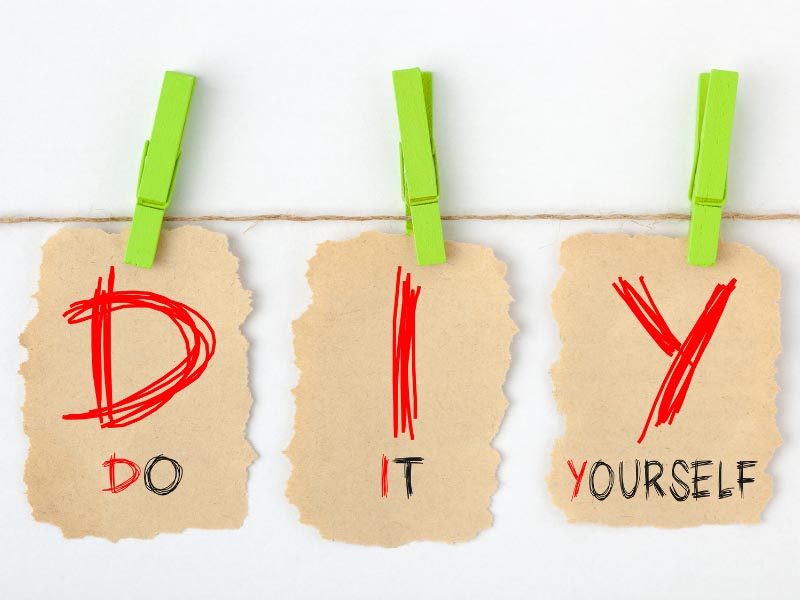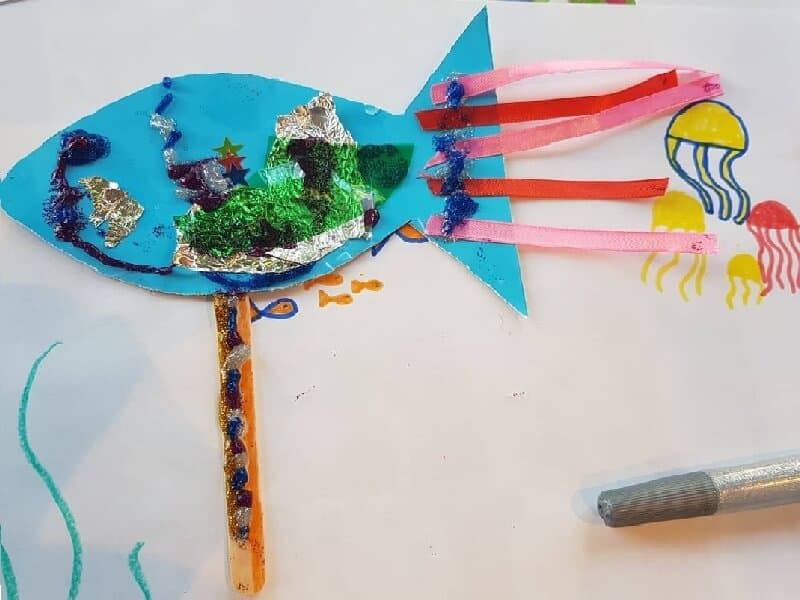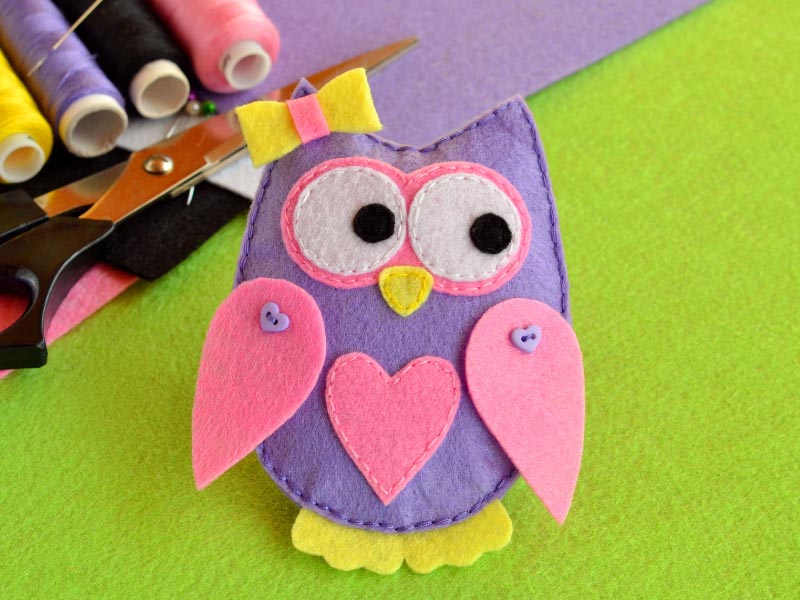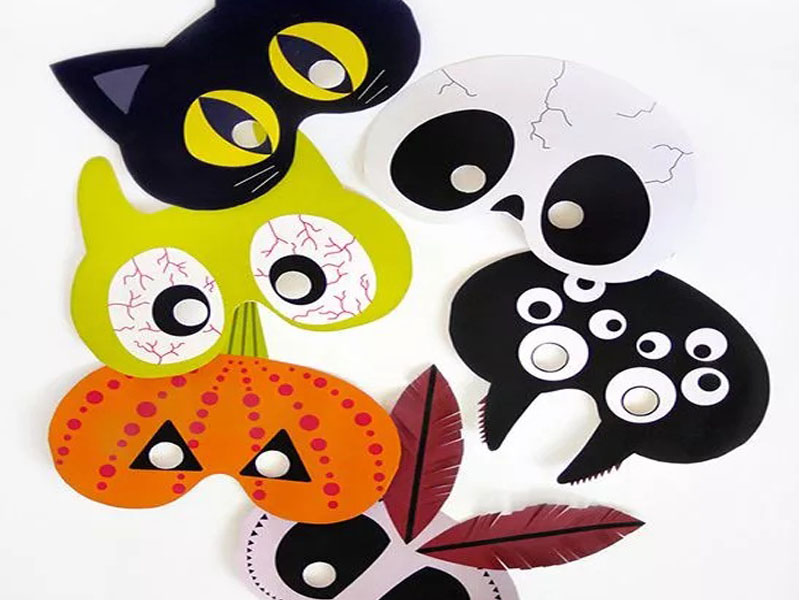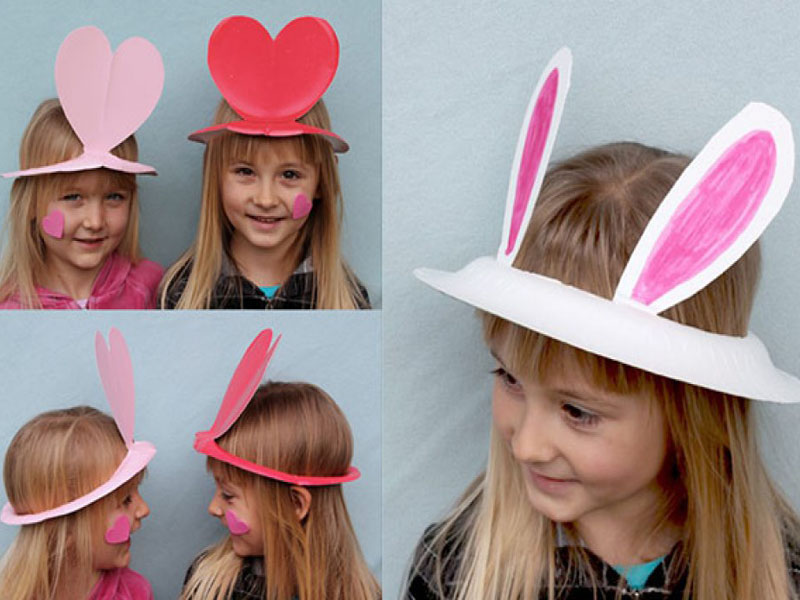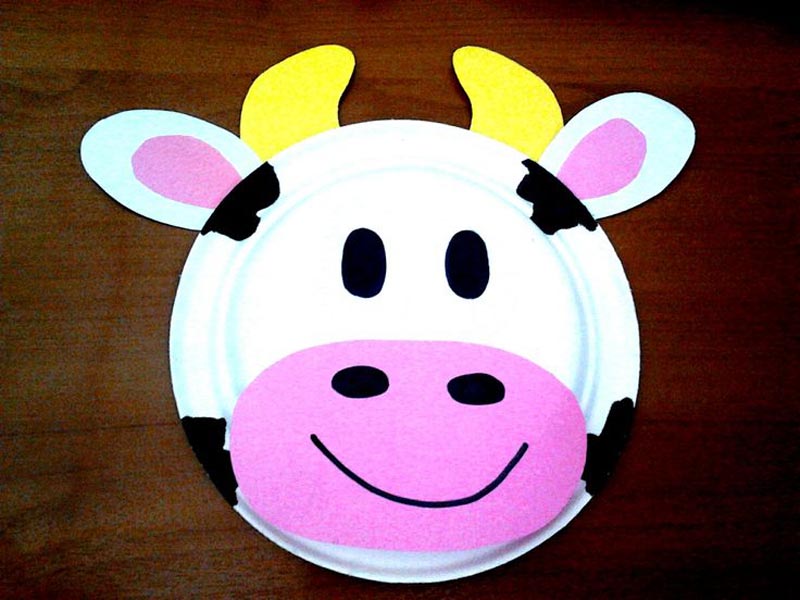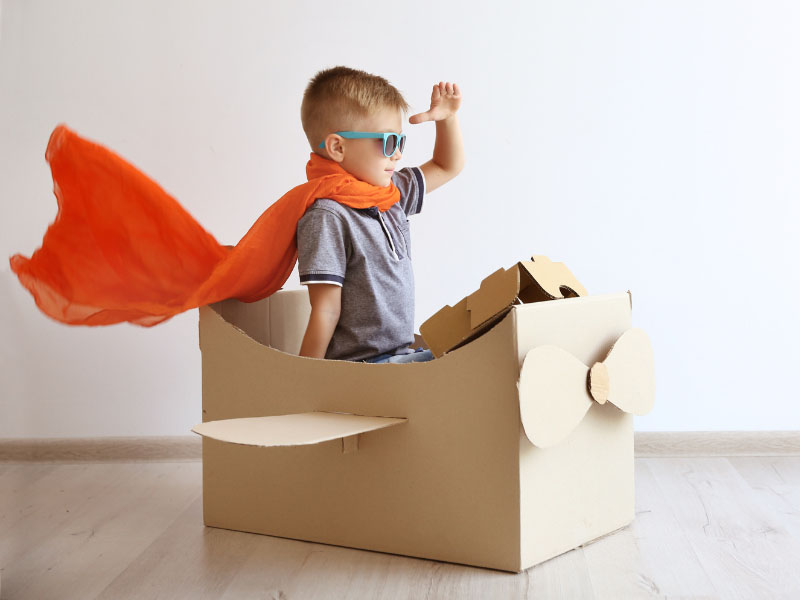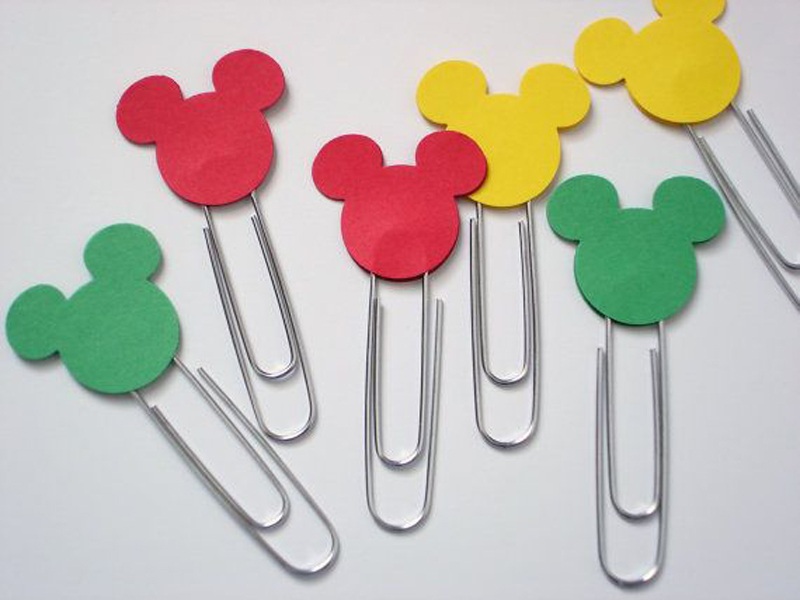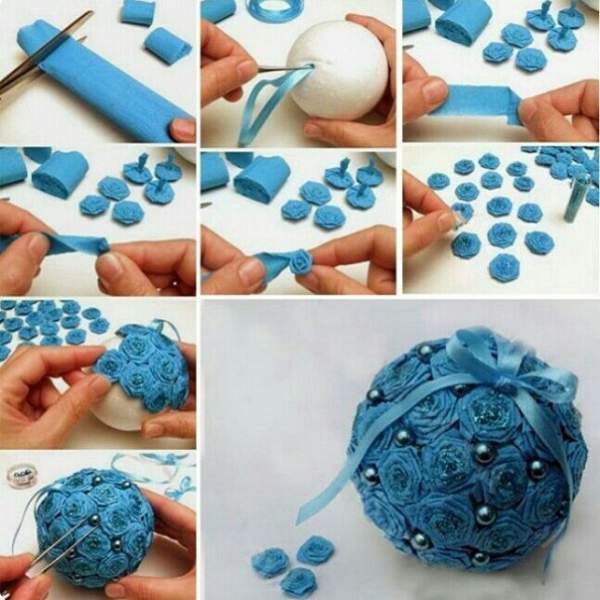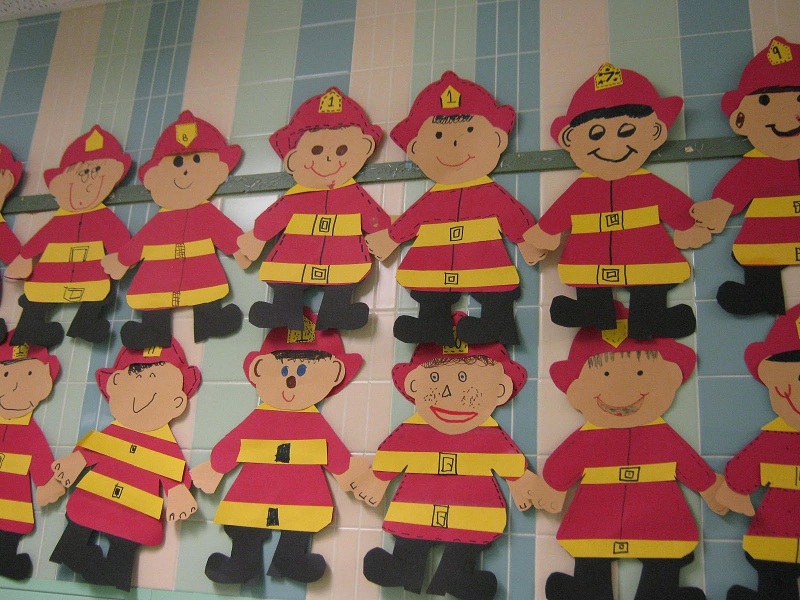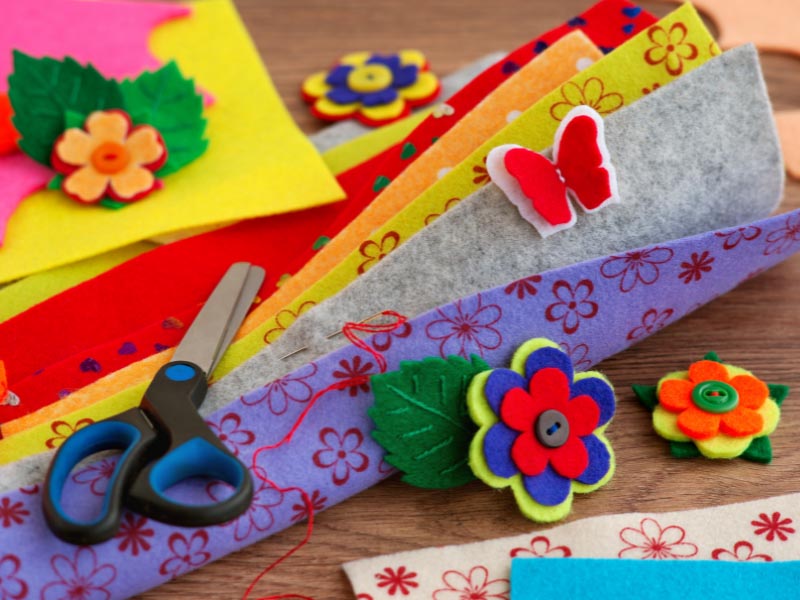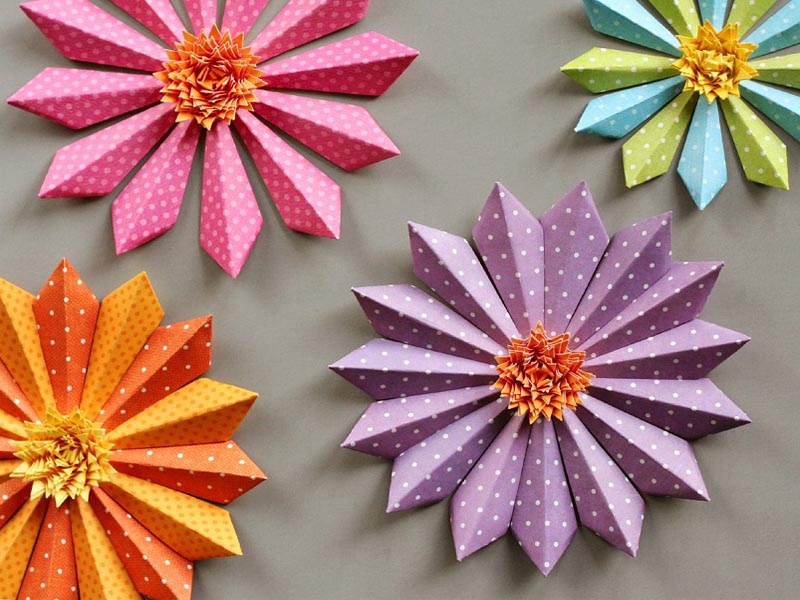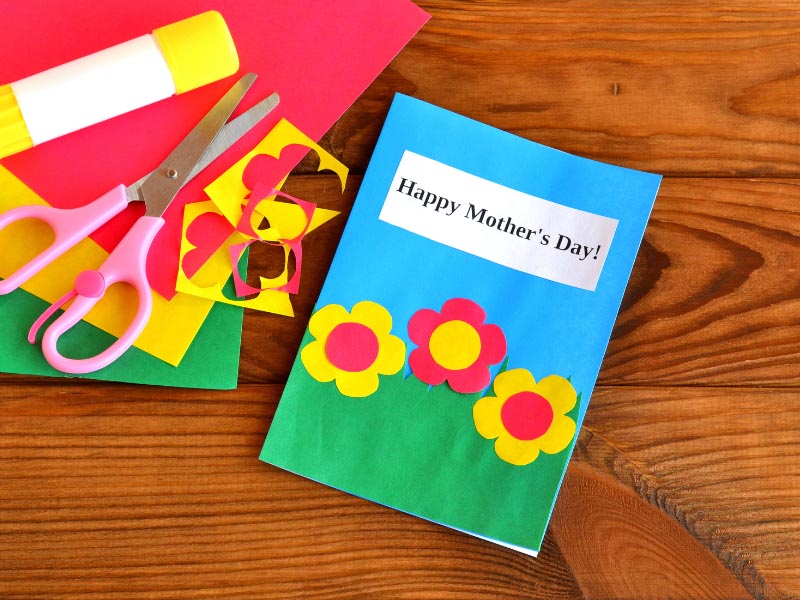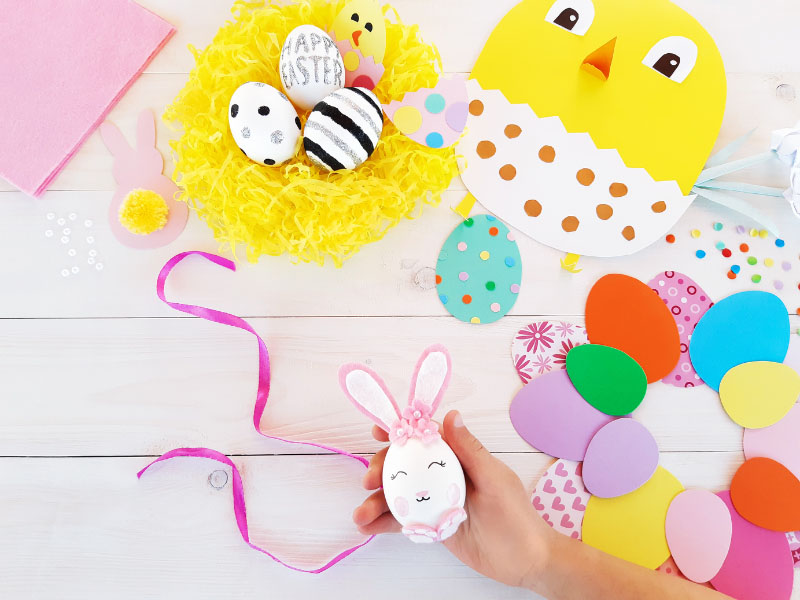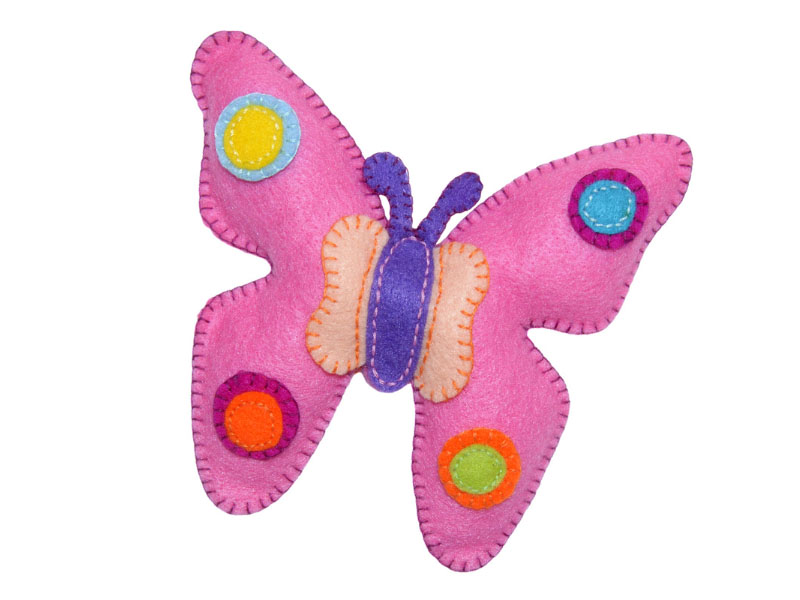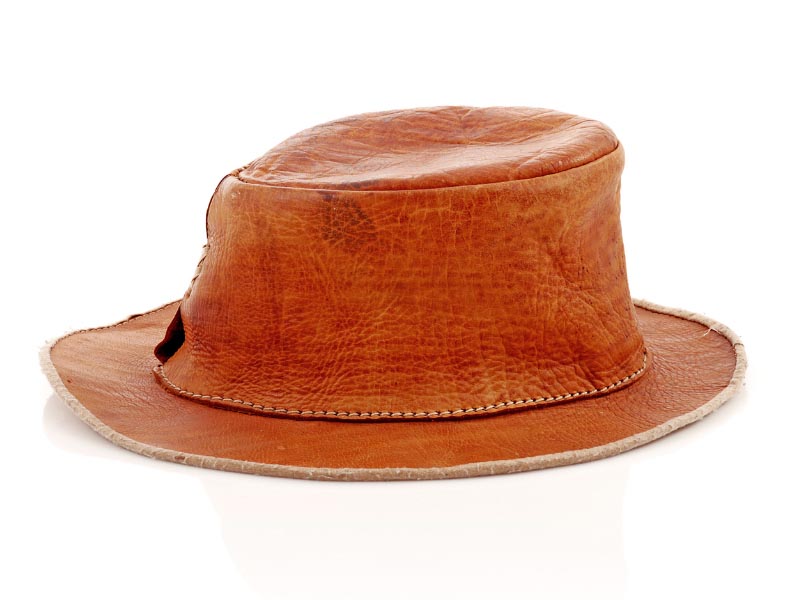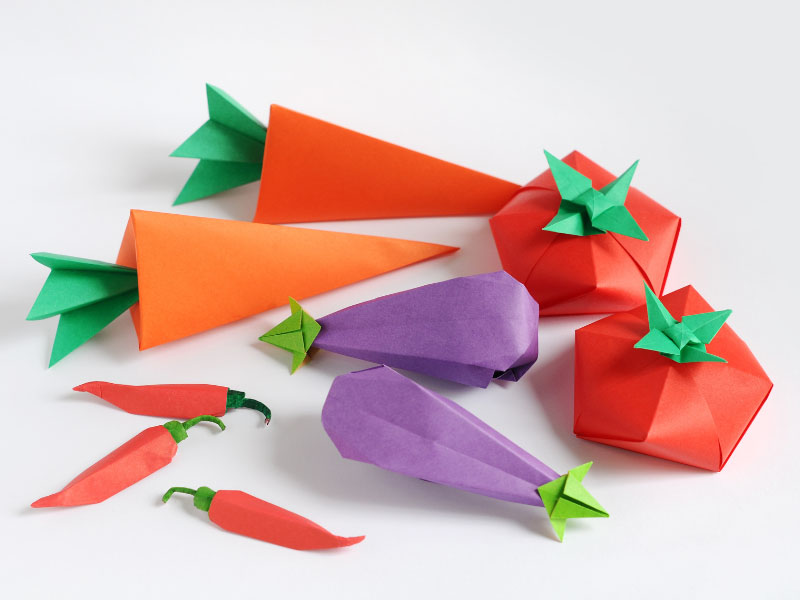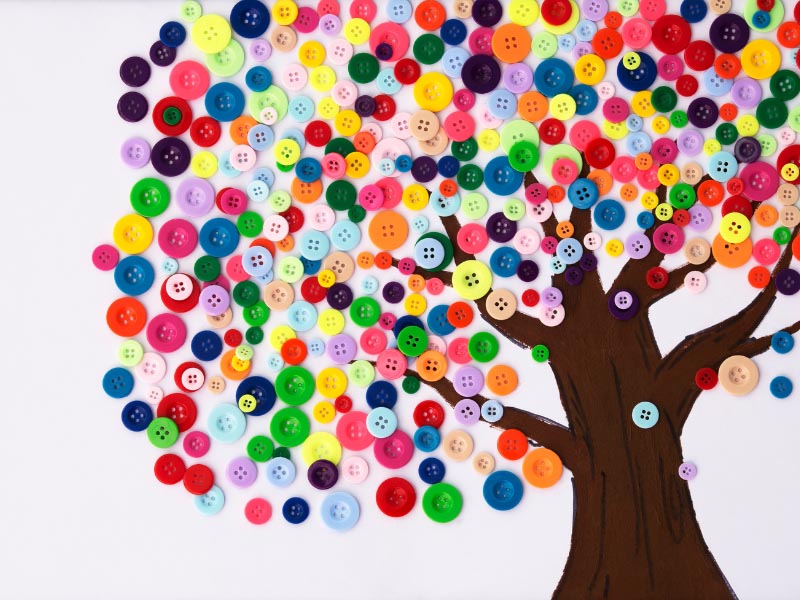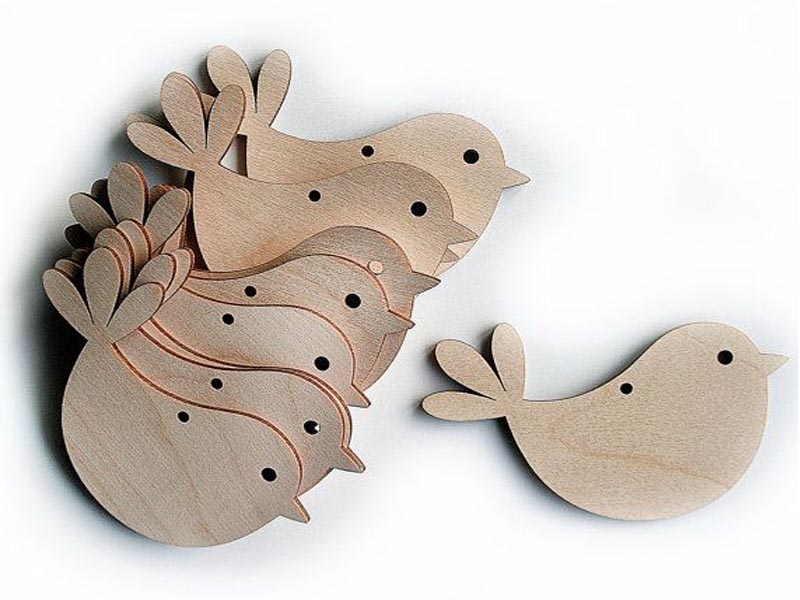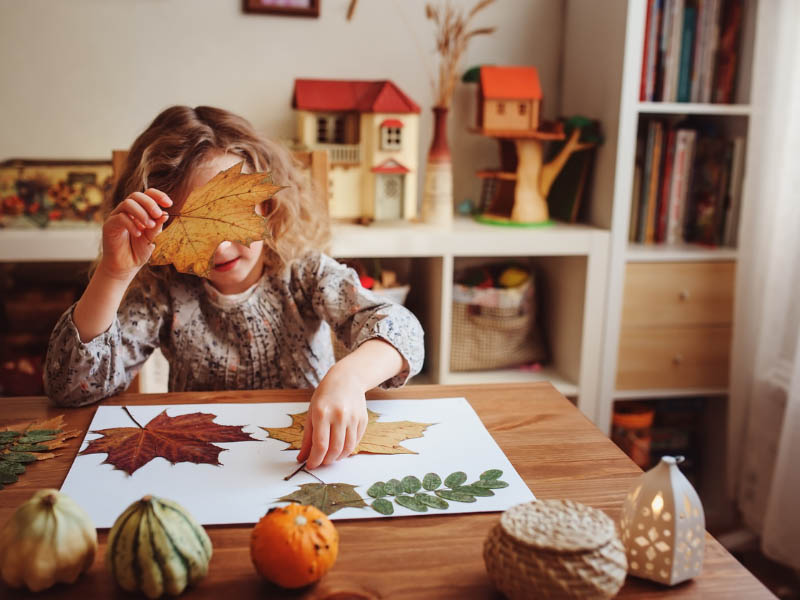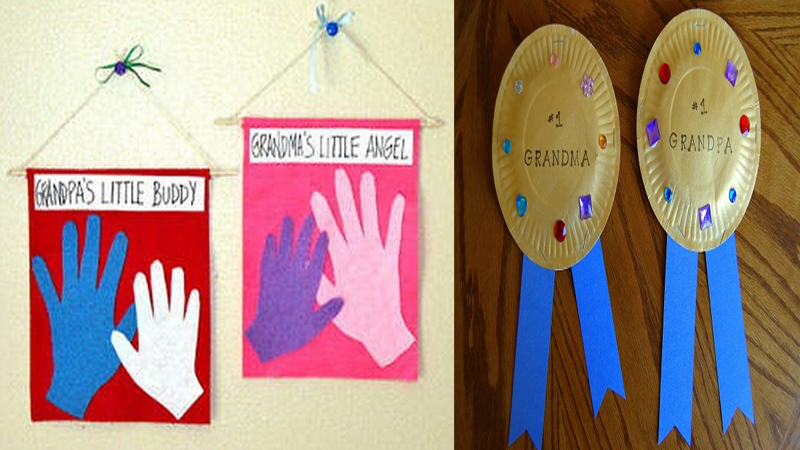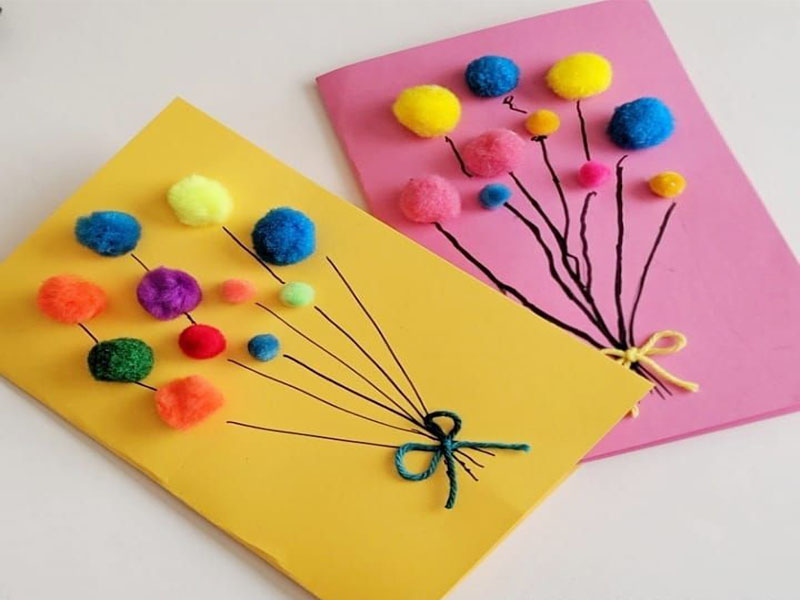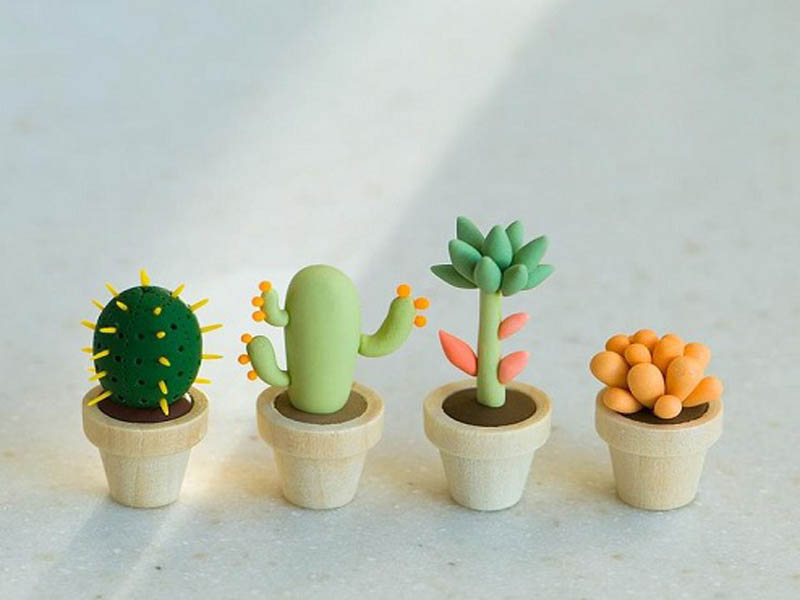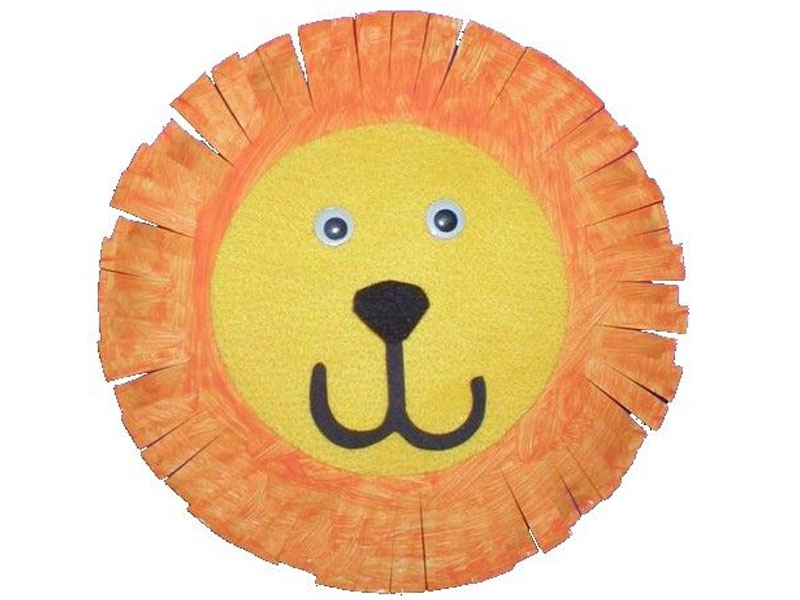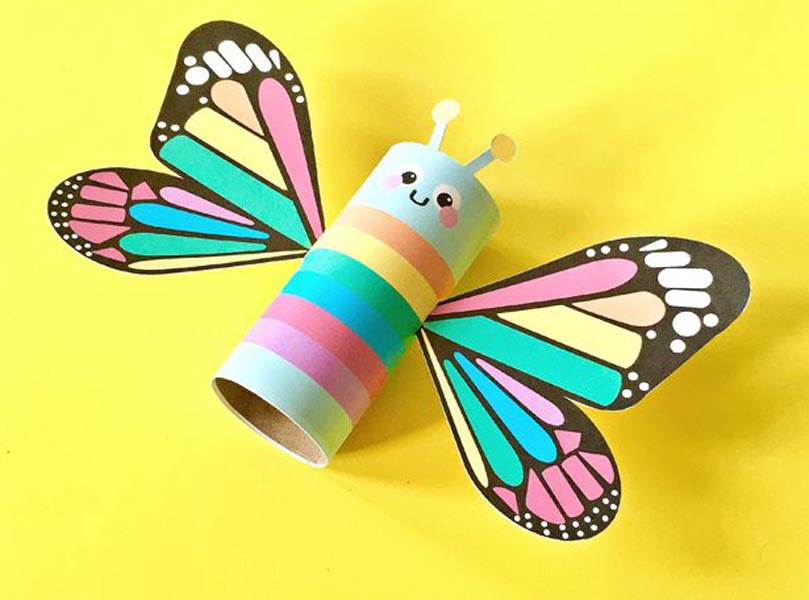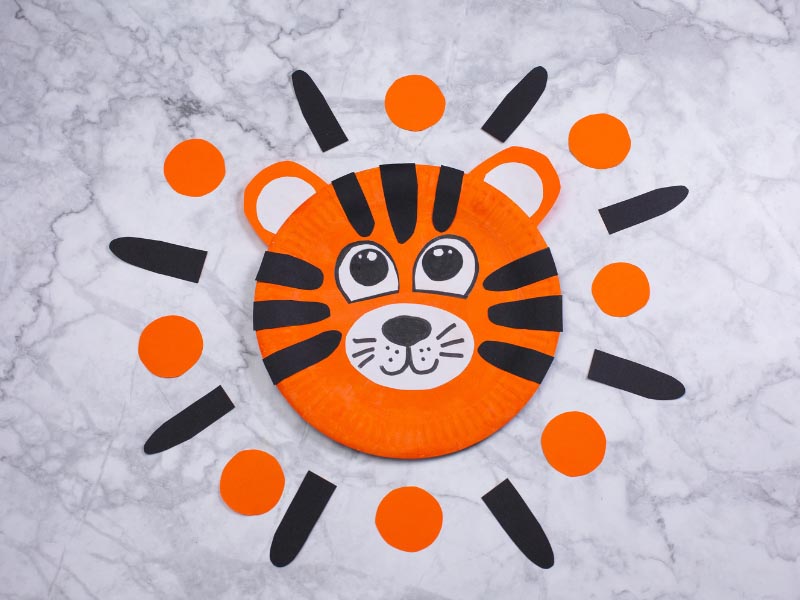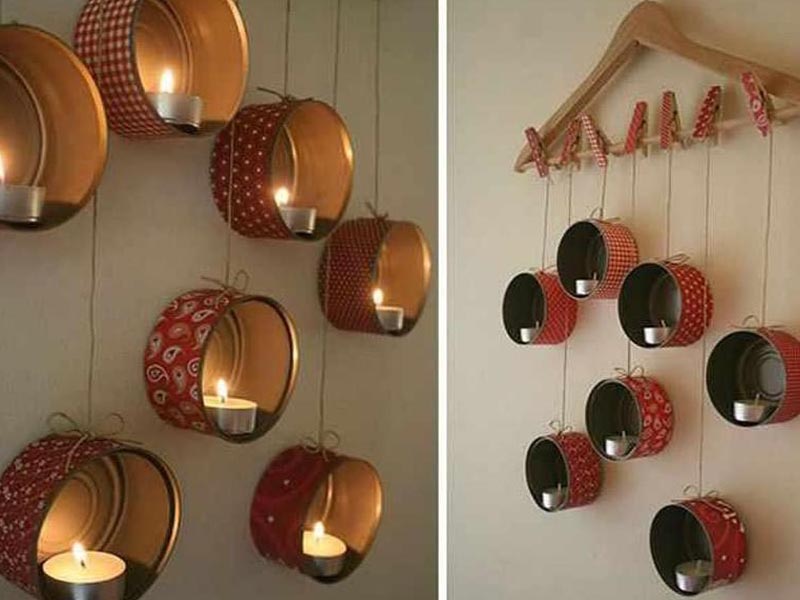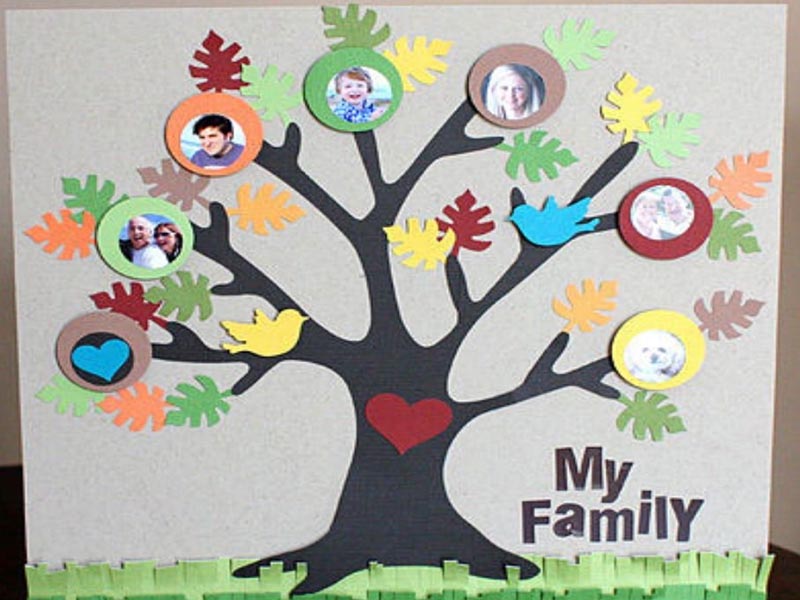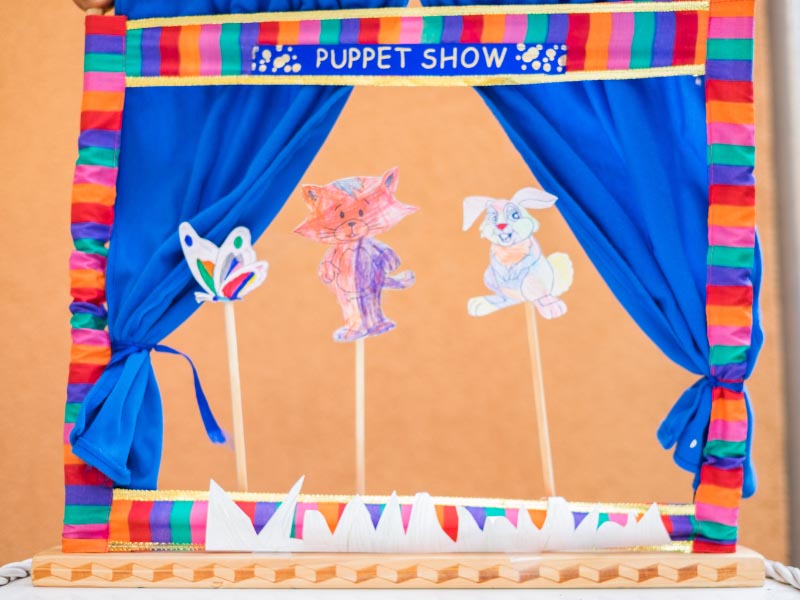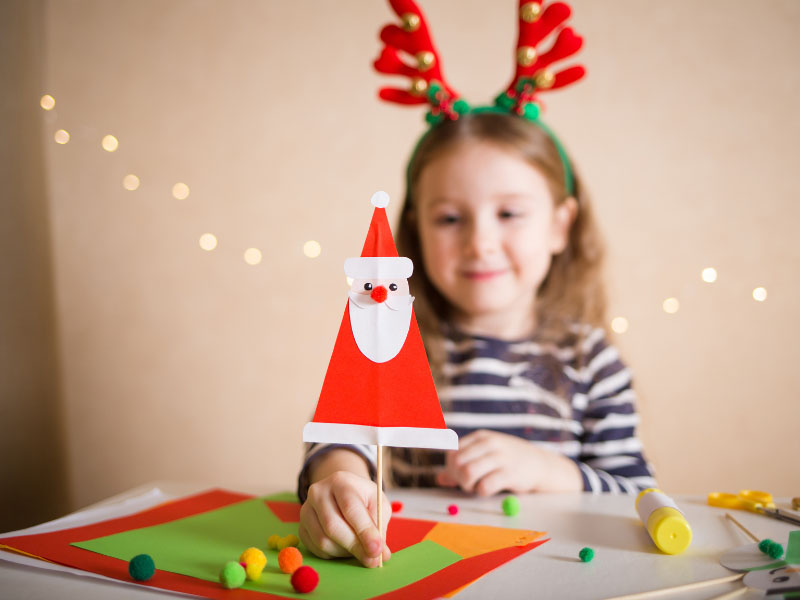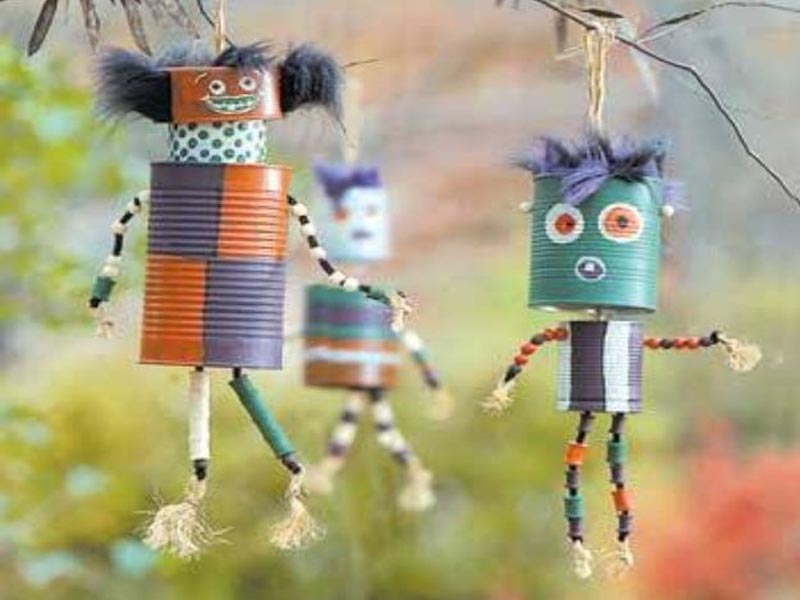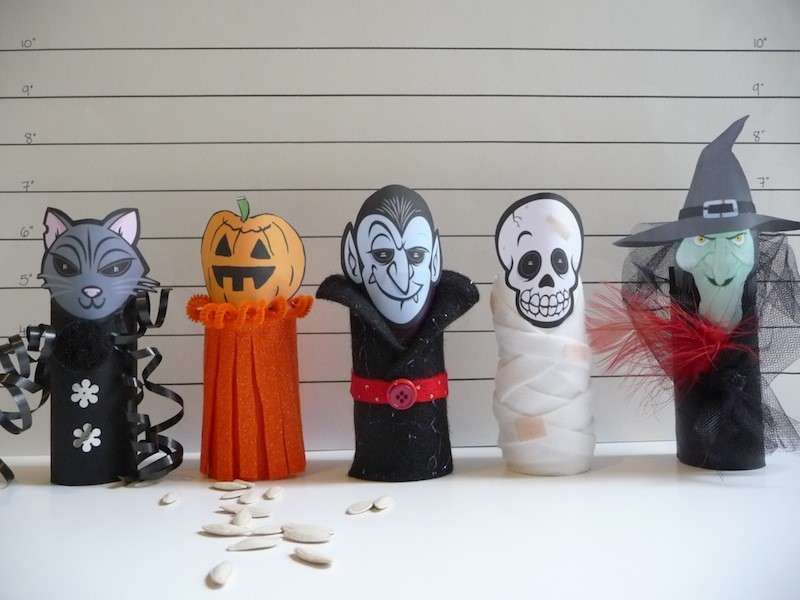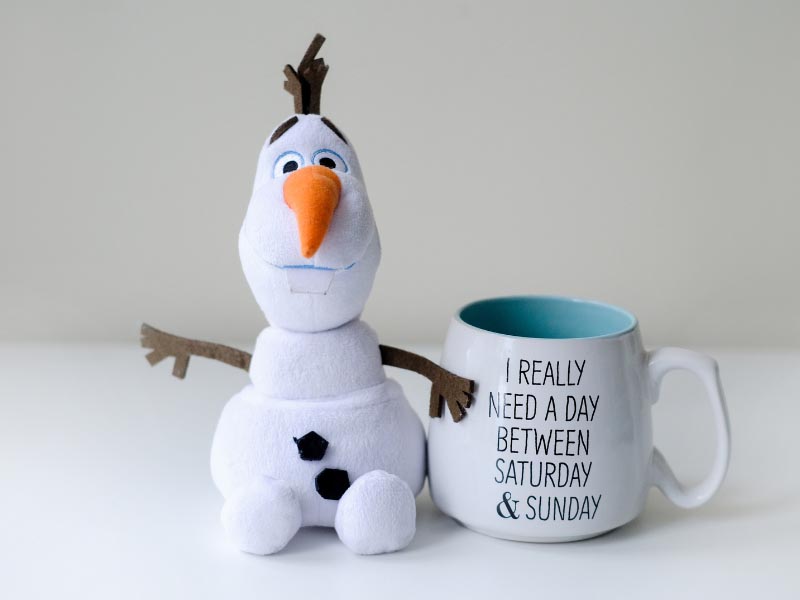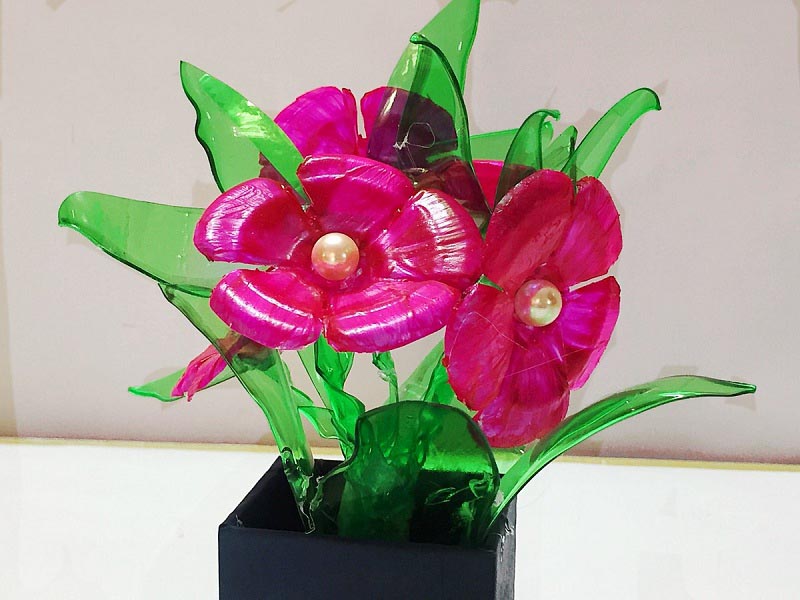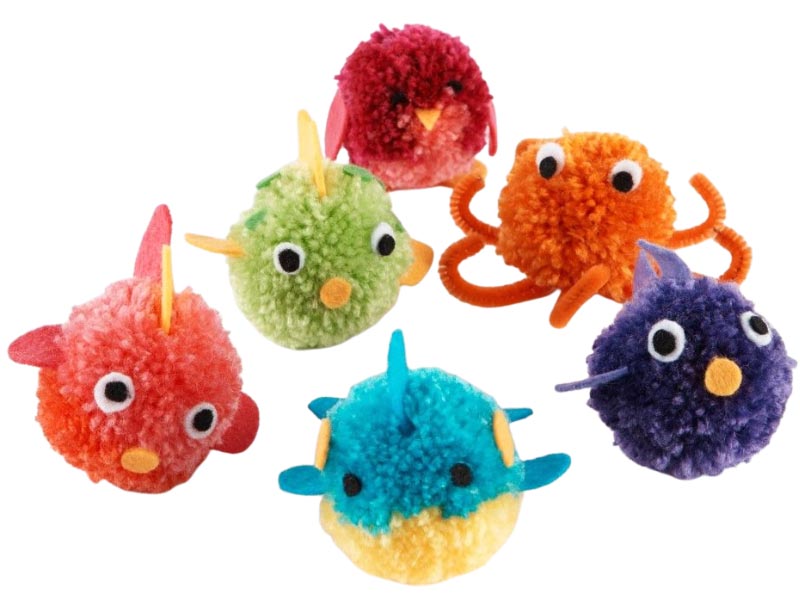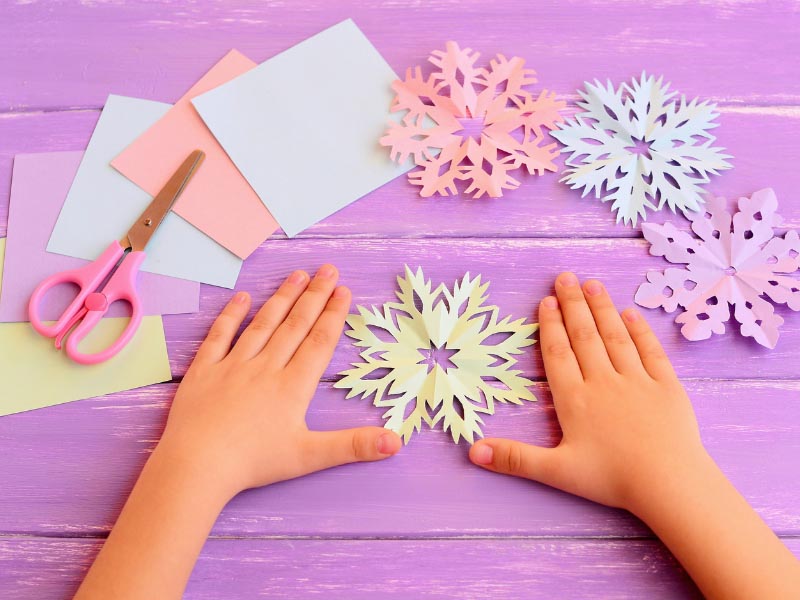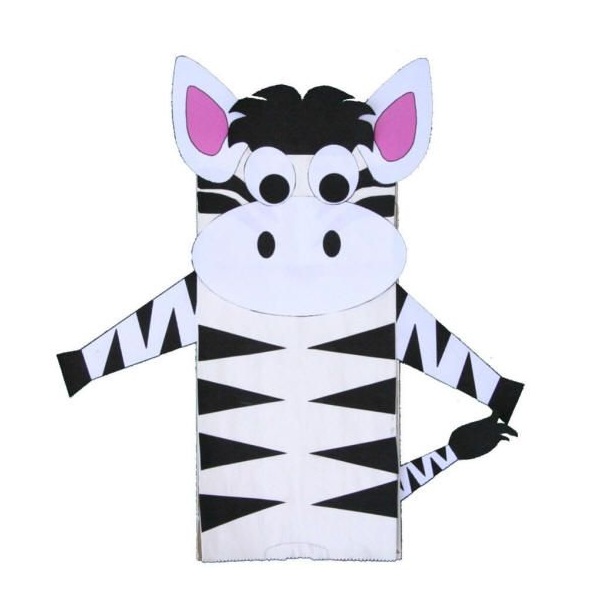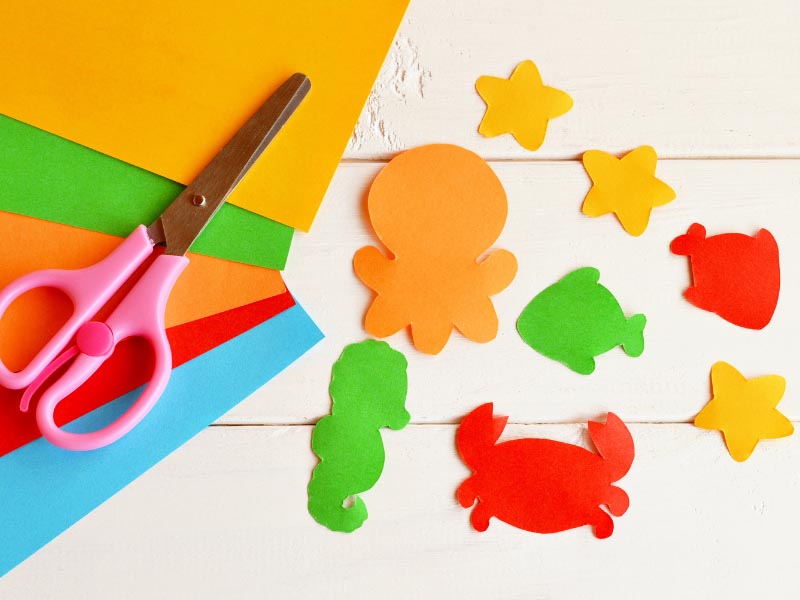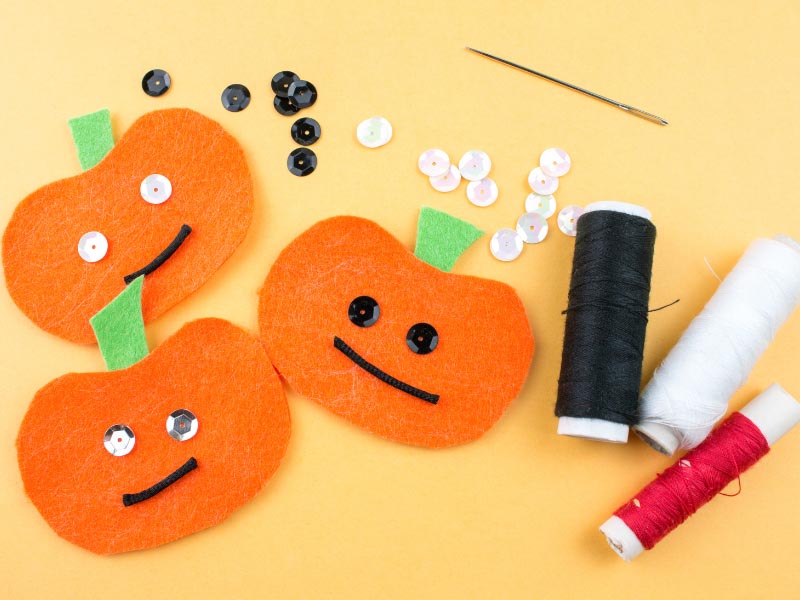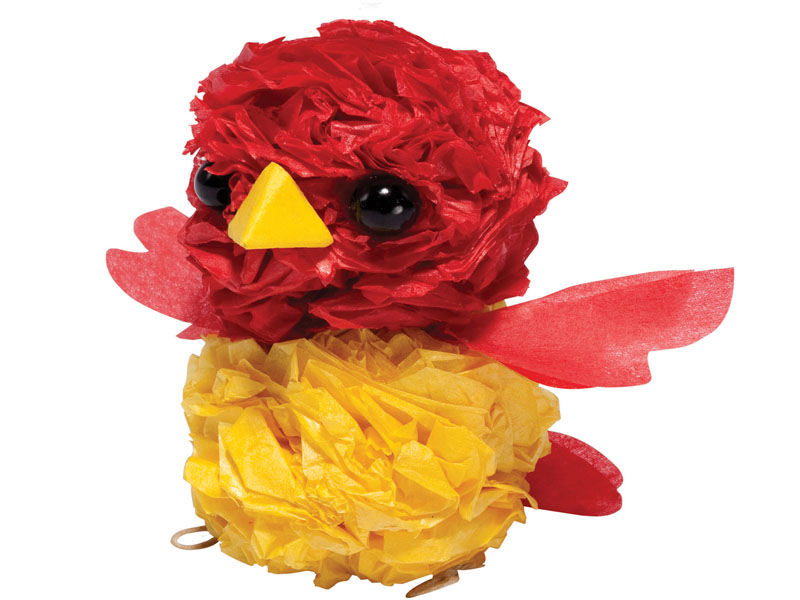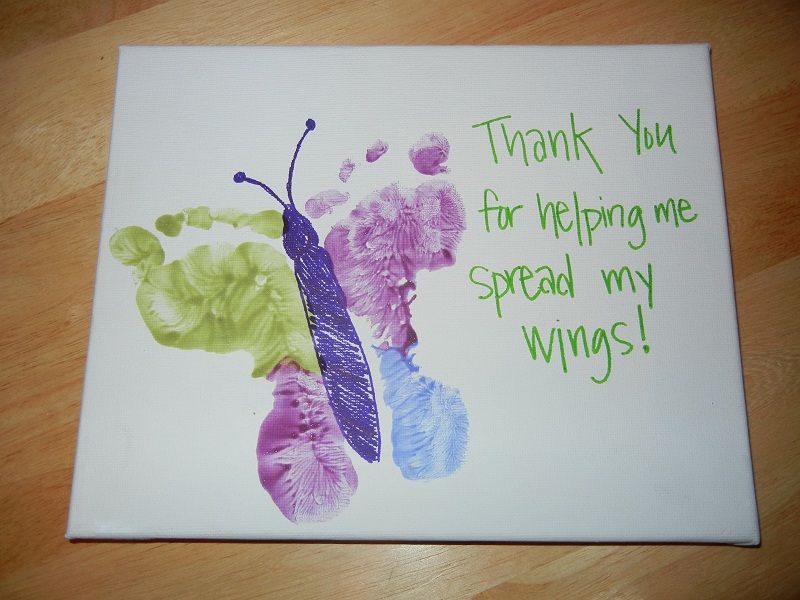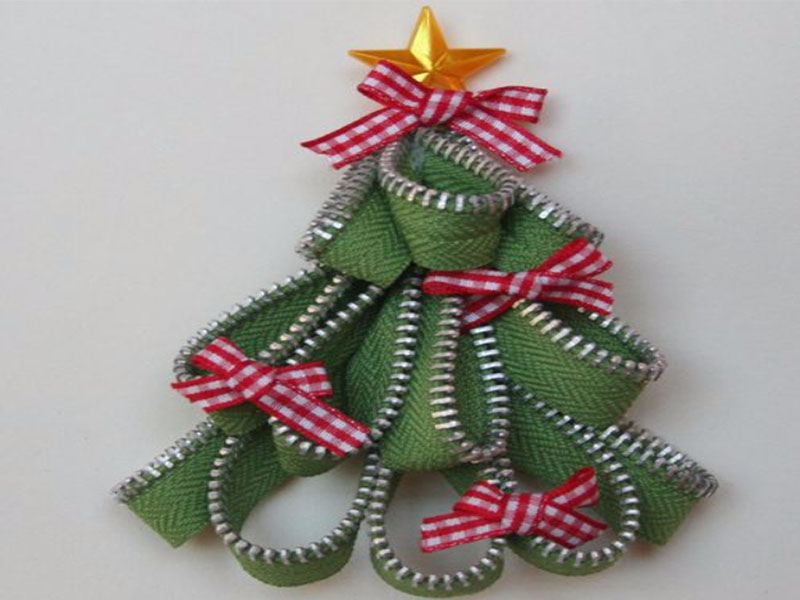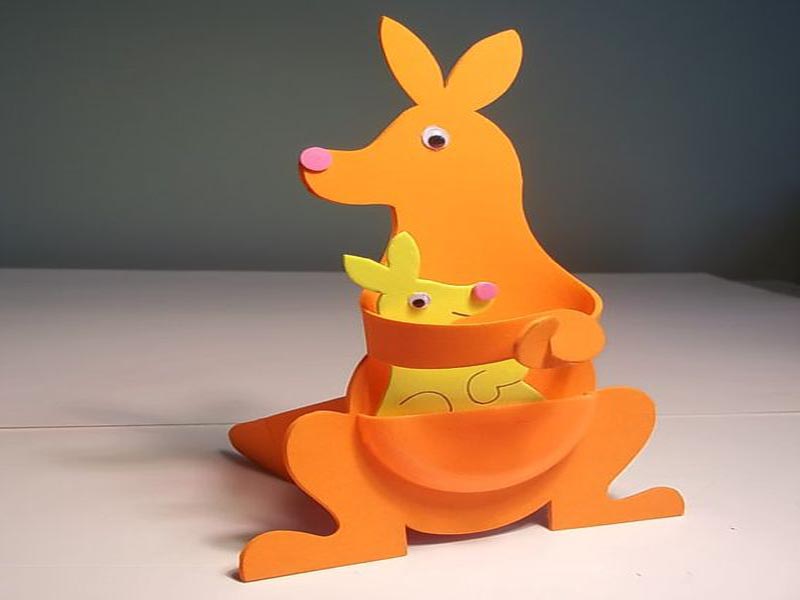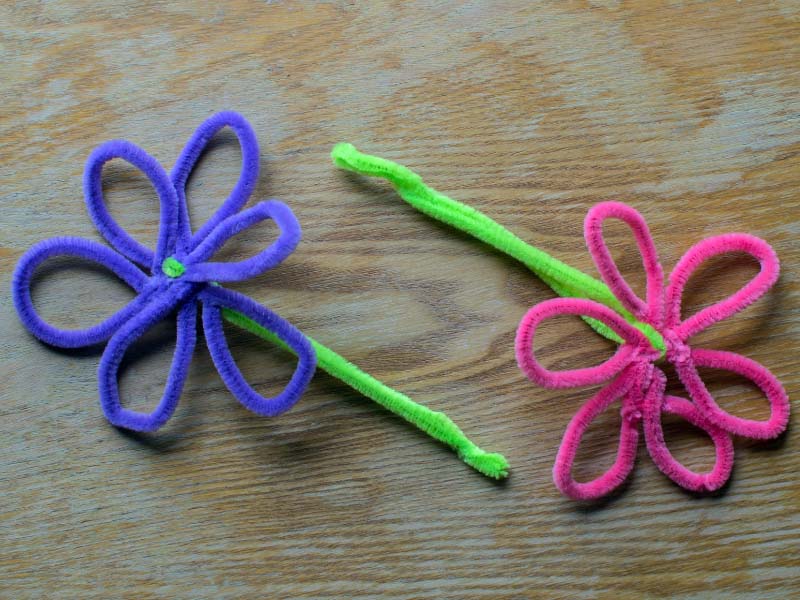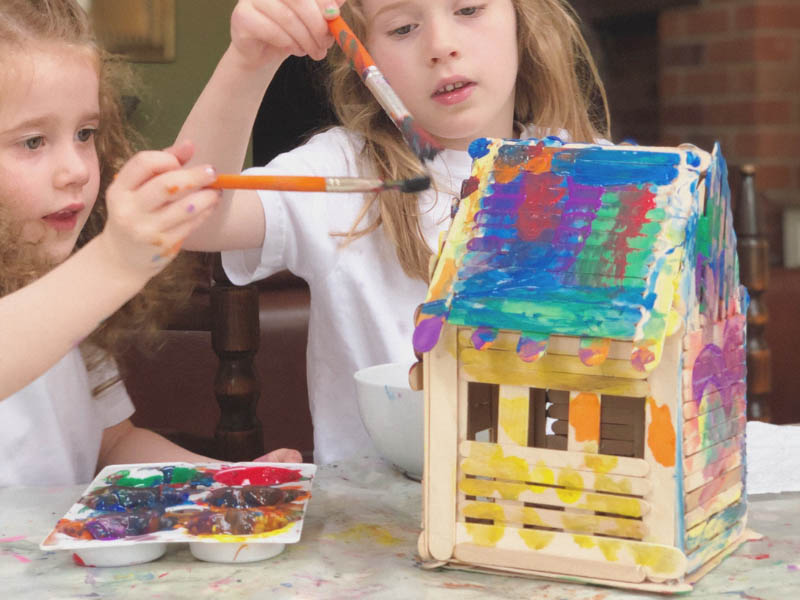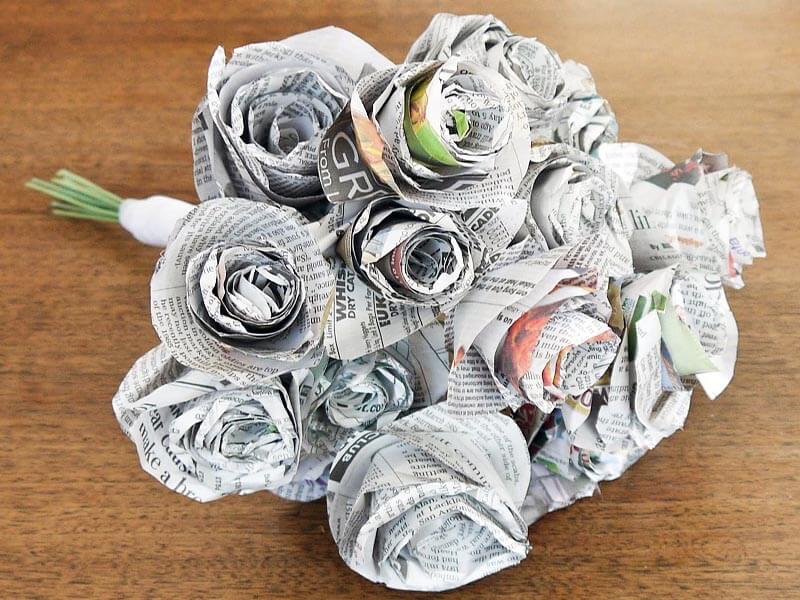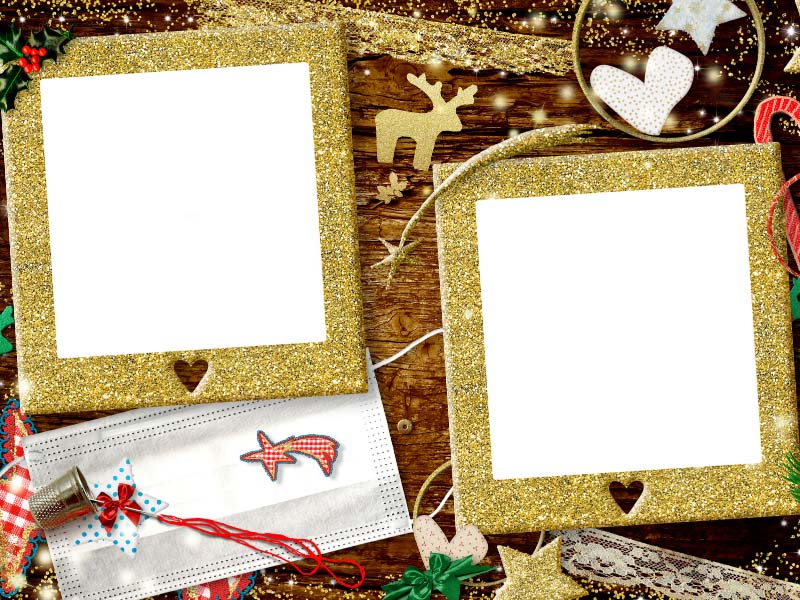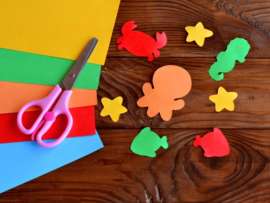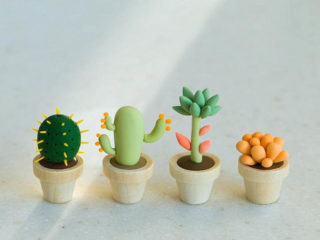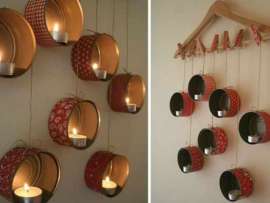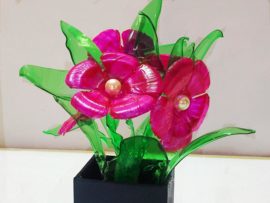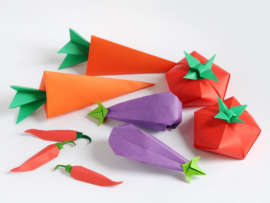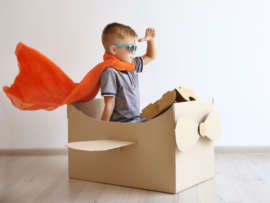When a pandemic hit, all our lives underwent a drastic change, especially for kids. Whether younger or elder, kids had to look for entertainment inside the home because how much TV can they watch? Simple Science experiments for kids can be an effective way to connect kids to otherwise boring subjects. The children’s science experiments mentioned in this article can positively influence making them to understand abstract concepts quickly.
There are several branches of science, and you can choose the department your kid is interested in the most. You can pave the way for your future Nobel winner by including some fun science experiments for kids. Read on to know more!
20 Best Science Experiments For Kids With Images:
We have curated some science experiments that can be fun and a knowledgeable experience for your kids. But, make sure there is an adult to supervise these experiments to avoid any mishap.
1. Easy Lung Model:
This easy lung model is a perfect way to teach your kids how lungs work and respiration, and the messiness is relatively low.
Things You Need:
- Straw.
- Plastic bottle.
- Two balloons.
- Tubber band.
- Playdough.
- Scissors.
Steps:
- Take a plastic bottle and cut off the bottom part.
- Insert a balloon through the mouth of the bottle and stretch another balloon around the opened end.
- 0Take a straw, push it through the bottle’s neck, and use a rubber band and play dough to secure it.
- The balloons will inflate and then deflate by blowing into the straw.
- This process will help explain to kids how the lungs work.
See More: Tips For How To Teach Kids
2. Static Electricity Experiment:
The static electricity experiment is one of the easy science experiments at home with things already available.
Things You Need:
- Small black plastic comb.
- Running water.
Steps:
- Firstly, take a small plastic comb, and wash and dry it properly.
- Vigorously run the comb through your long, dry hair, many times charging it with static electricity.
- Run faucet water with at least a 1/8-inch thick stream of water.
- Slowly move the comb towards the water.
- The stream of water moves towards the comb with every move.
3. Magnetic Metals Experiment:
This magnetic metals experiment is a perfect example of a simple science experiment that helps kids understand magnetic metals, as the name suggests.
Things You Need:
- Coin.
- Bottlecap.
- Paper clip.
- Metal spoon.
- A magnet.
- A chart.
- A ruler.
Steps:
- Place the coin, bottlecap, paperclip, and metal spoon on a table adjacent to each other.
- List all the items on a chart and add two boxes after each thing.
- Write the word prediction above the first box and the word result written above the second box.
- Take a ruler and tape a magnet at the end of it. Make sure that the magnet is facing the objects.
- Move the ruler towards every object.
- You will observe the object attracted to the magnet and mark the result in the box written “result” on the chart.
4. High Bounce Ball Experiment:
The high bounce ball experiment is one of the best science experiments for kids to understand how to measure the changes in the elasticity of the balls by temperature changes.
Things You Need:
- Three high bounce balls.
- A bowl of hot water.
- A saucer.
- A baggie.
Steps:
Place a bouncing ball in a saucer at room temperature, place another one in a baggie, seal it and place it in a freezer; use a hot bowl of water to put the third ball.
- Let the balls remain in place for about an hour.
- Every fifteen minutes, refill the bowl with more hot water.
- After an hour, bounce all three balls on the floor.
- Now measure how high each ball reaches.
- The elasticity of each ball changes with the temperature difference.
5. Milk Painting Experiment:
One of the children’s science experiments explains the interaction of different elements once added to the milk. This is a fun experiment to do with preschoolers.
Things You Need:
- ½ a cup of milk.
- Dish soap.
- A cotton swab.
- Food coloring.
- Toothpick.
- A watercolor paper or cardstock paper.
Steps:
- Cut the watercolor paper or cardstock paper into the size that fits in the bowl or tray.
- Pour the half cup of milk into the tray.
- Add a few drops of different food coloring around the tray of milk.
- Now add a couple of dollops of dish soap around the tray.
- Now you can observe the interaction between the dish soap and food coloring.
- Swirl the colors gently by using a toothpick.
- Now place the watercolor paper or cardstock paper over the patterned milk.
- Once you remove the paper, you can observe the pattern transfer onto the paper.
- You can hang the masterpiece once it dries.
6. Lava Lamp DIY:
A DIY Lava lamp is one of the best kindergarten science experiments that will make your kids squeal with amazement. It also helps kids understand chemical reactions.
Things You Need:
- Vegetable oil.
- Food coloring.
- Antacid tablets.
- A glass jar full of water.
Steps:
- Take a glass jar full of water.
- Mix the oil, food coloring, and antacid tablets into the water.
- The oil and water don’t easily mix.
- The antacid tablets will make the oil form little globules, and the food coloring dyes them.
- The entire thing looks like a temporary lava lamp.
7. Volcanoes With Baking Soda:
The baking soda volcanoes is a fun science experiment for kids, teaching them about earth science and chemical reactions practically. However, there is a high amount of messiness in this experiment, and therefore it is best to try it outdoors.
Things You Need:
- Baking soda.
- Dishwashing detergent.
- Vinegar.
- Water.
- Soda bottle or a large mason jar.
- Playdough or aluminum foil.
Steps:
- Place the baking soda in a mason jar or a soda bottle.
- You can place playdough or aluminum foil around the bottle to give it a realistic look.
- Combine the dishwashing detergent and vinegar in some water.
- Now pour the mixture into the mason jar with baking soda.
- Observe the volcano erupt.
8. Tornado In A Jar Experiment:
This is one of the best science activities for kids who would love to know about tornados in detail. It is pretty easy to do and causes less mess.
Things You Need:
- Water.
- Dish soap.
- Mason jar.
- Vinegar.
- Glitter.
Steps:
- Fill 3/4th of the mason jar with water.
- Add a tbsp of dish soap and one tbsp of vinegar to the mason jar.
- Add a little bit of glitter.
- Now close the lid and swirl the water by twisting the jar.
- By continuously rotating the jar, you can observe a tornado form in the center of the jar.
9. Celery Stalk Experiment:
The celery stalk experiment is the best science experiment at home that makes your kids understand plants and is pretty easy to set up. It is also a suitable science experiment for kids at school.
Things You Need:
- Celery stalks.
- Glass jars.
- Food coloring.
- Water.
Steps:
- Fill three mason jars with different coloured water.
- Place the celery stalks in each glass jar.
- Leave the stalk in the water for about a day.
- After a day, you can observe that each celery stalk is the color of the water in the glass.
- This happens because the celery stalk transports water and nutrients through capillaries.
10. Xylophone With Water:
The xylophone made with water can be a perfect homemade science experiment that helps kids understand sound waves. This is also the best science experiment with water that works well for kids of all ages.
Things You Need:
- Glass jars.
- Water.
- Food coloring.
- Wooden sticks.
Steps:
- Take four glass jars and pour a different amount of water into each jar.
- Take the wooden stick and hit it on the sides of the jar.
- Depending on the amount of water, the sound varies.
- The less the water, the higher pitch the jar makes; the more water, the lower pitch the jar makes.
11. Blood Model Experiment In A Jar:
If you are looking for a science project for kids that explain human biology, this blood model experiment in a jar is a perfect option. It is pretty easy to set up and causes a medium mess.
Things You Need:
- Empty bottle or jar.
- Corn syrup.
- Dry white lima beans.
- Red cinnamon candies.
- White sprinkles.
Steps:
- Take an empty jar and add a tiny amount of all the ingredients to it.
- Swirl the jar a little bit, and you can look at the composition of the book beautifully.
- Each ingredient represents each blood element, such as red blood cells, plasma, platelets, etc.
12. Refraction Of The Light Experiment:
This children’s science experiment explains how light travels with the help of simple materials available in any home. It is easy to set up and doesn’t cause too much mess.
Things You Need:
- Marker.
- Transparent water bottle.
- Marker.
- Water.
Steps:
- Draw two arrows on a sticky note and place them on the wall.
- Fill the transparent bottle with clear water.
- Now, slowly move the bottle towards the arrow.
- As you move the bottle forward, the direction of the arrow appears to be changing.
- This is because when light passes through materials like plastic and water, it refracts.
13. Nature Journal:
A nature journal is a science experiment for kids that encourages children to pay attention to nature around them and be creative. In addition, a nature journal improves kids’ scientific observation and might make them more interested in ecology.
Things You Need:
- Blank notebook.
- Pen, pencil, crayons, markers.
- Tape or glue.
Steps:
- A nature journal can document anything, whether the animals they see or the traces of leaves, butterflies or even a beautiful flower.
- It encourages your child to get away from the gadgets all day and delve into nature.
- You can ask them to research more about the questions they might have during observation.
14. Stimulation Of Animal Blubber:
This science experiment will help kids understand how animals like seals or polar bears stay warm in polar climates. This experiment will explain everything practically.
Things You Need:
- Shortening.
- A bowl of ice water.
Steps:
- Fill a large bowl with ice water and leave it there for a few minutes.
- Let the kids dip their hands in cold water as long as they can bear.
- Now, coat shortening on one of their fingers.
- Repeat the experiment.
- You can observe that the shortening acts as a protective layer of fat, making the finger feel less cold.
15. Static Electricity Experiment:
The static electricity experiment is a perfect way to make young kids understand static electricity in a visual and fun way.
Things You Need:
- Tissue paper.
- Cardboard.
- Pencil.
- Thick paper.
- Scissors.
- Balloon.
- Glue stick.
Steps:
- Create the body of a butterfly using thick paper and for wings, use tissue paper.
- Blow up a balloon
- Noe, make kids rub the balloon on their heads.
- Now you can observe that the butterfly wings move following the balloon movement, making it look like the butterfly is flying.
16. Leak-Proof Bag Experiment:
If you are looking for an experiment that will appeal to kids of all ages, the leak-proof bag experiment is the perfect option. It teaches kids about plastics and molecules in a less messy way.
Things You Need:
- Water.
- Bamboo skewers or objects with sharp ends.
- Zip-lock bags.
Steps:
- Take a zip-lock bag and fill it with 2/3 rds water.
- Close the zip-lock bag.
- Now take a few shark-end objects like pencils or bamboo skewers.
- Poke them through the zip-lock bag and place the bag over your kid’s head.
- You don’t have to worry about spills because the chain molecules in Zip-lock bags joined back together when forced apart.
17. Plant Science Experiment:
This plant science experiment is a perfect option if you want your kid to know how a leaf breathes. It requires few elements and is very easy to implement.
Things You Need:
- Large glass bowl.
- A large leaf.
- A small rock.
Steps:
- Take a bowl of water and place a large leaf in it.
- Place a rock to weigh the leaf down.
- Leave the bowl where there is sunlight.
- After a few hours, you can observe bubbles in the water. This is because, during photosynthesis, the leaf releases oxygen created during the process.
18. Penguin Skin Drying Capability Experiment:
Every kid is a fan of penguins, and they have hundreds of questions. This experiment will help kids understand how penguins can remain dry.
Things You Need:
- Crayons.
- Water.
- Spray bottle.
- An image of a penguin.
Steps:
- Take a print of a penguin picture from the internet or draw it.
- Now make kids color the picture using wax crayons.
- Now use the spray bottle to spray water on the colored picture of the penguin.
- You will observe that the wax present in the crayons doesn’t let water get absorbed, keeping the paper dry.
- In the same way, bords, like penguins, have a protective layer that keeps them dry.
19. The Density Of Saltwater Experiment:
This is a quick science experiment that explains water density to kids practically. It is easy to set up, and the messiness is medium. You can do this experiment outside your house if you don’t want the mess.
Things You Need:
- Four glasses(clear).
- Salt.
- Sugar.
- Water.
- Baking soda.
- Plastic jewels, Raw eggs or Small grapes.
Steps:
- Fill the glasses with clear water.
- Add salt to one glass, sugar to another, baking soda to the third, and leave the last glass with water.
- Now add one grape to each glass.
- Grapes in each glass act differently.
- The grape placed in saltwater glass floats on top when compared to the grapes in other glasses.
See More: Indoor Activities and Games for Kids
20. Dinosaur Tracks Experiment:
If your kid is a dinosaur buff and wants to do an activity around paleontology, the experiment on the dinosaur tracks is a perfect option. You can also implement this experiment as a treasure hunt for younger kids.
Things You Need:
- Bowl.
- Rolling pin.
- Wooden spoon.
- Wax paper.
- Flour.
- Salt.
Steps:
- Take a bowl and add salt and flour to it.
- Add the required amount of water to combine the mixture.
- You can take small fistfuls of the dough and use a wooden spoon to form a dinosaur foot.
- All of you can either wait for the fossils to dry or bake them at 200 degrees.
- You can hide the baked feet and make kids search for them like a treasure hunt.
It can get your child excited about learning science by implementing any one of these simple science experiments for kids. You can choose the area of science that your kid is interested in or even introduce an entirely new area of science to create intrigue. Go through all the experiments and choose the right one for your child. Don’t forget to let us know if you found the article helpful.
Disclaimer: The information provided in this article is based on research and not a replacement for a professional opinion. The website is not responsible for the accuracy and authenticity of the information provided in this article.
FAQs:
1. Is adult supervision necessary for kids to perform science experiments?
Though the science experiments for kids mentioned in this article are safe, adult supervision is necessary to avoid accidents. Therefore, make sure an adult is always present when your kid is experimenting.
2. What are the precautions to be taken before performing science experiments?
Whether in school or at home, while performing some science experiments, it is mandatory to wear safety goggles, shoes, and a lab coat. Make sure you don’t have loose hair or loose clothing, which can be counterproductive.
3. What are the things that kids need to understand before performing experiments?
It is always better to make kids understand what the experiment is and what they will learn. This will make them excited and more enthusiastic to learn about science.
4. Are these experiments safe for toddlers?
Not all the experiments mentioned in this article are toddler-friendly. If you are planning to involve your younger kids involved in the investigation, make sure you are there to keep an eye on them.
Image Sources: 1, 2, 3, 4, 5, 6, 7, 8, 9, 10, 11, 12, 13, 14, 15, 16, 17, 18, 19, 20.


